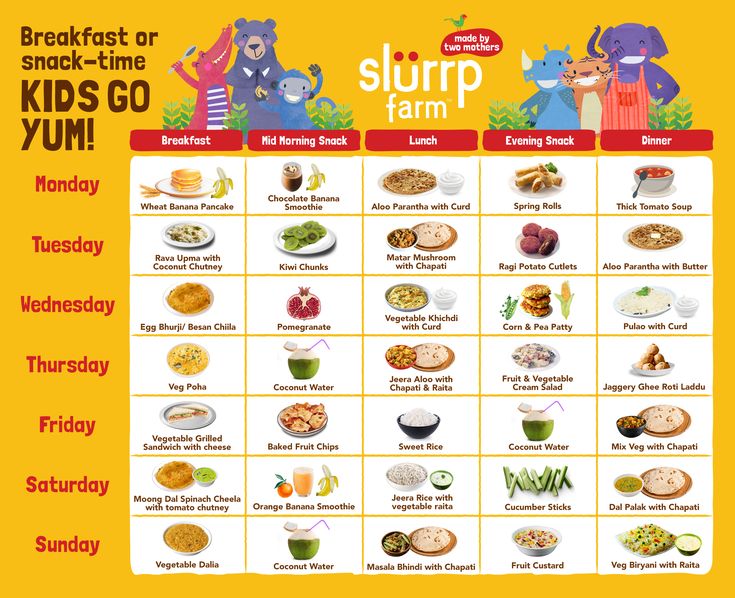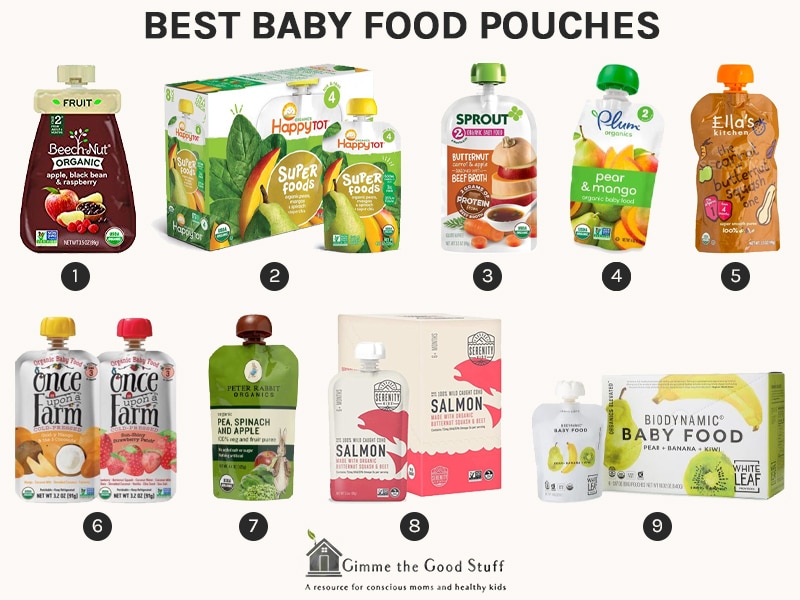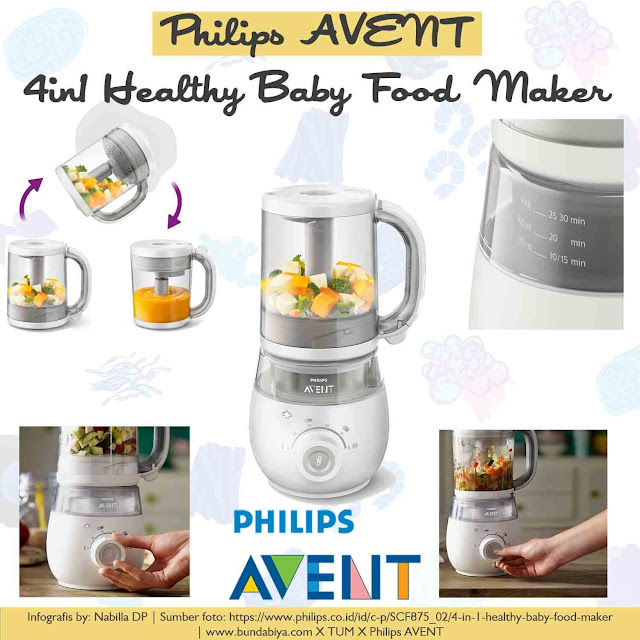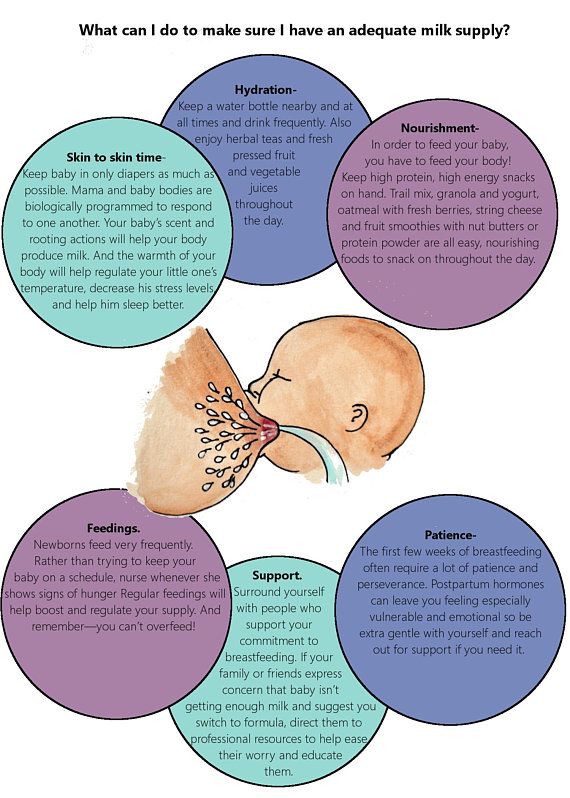Wholesome baby food plums
Prunes and Plums for Baby Food
Plums and Prunes in Baby Food Recipes – When Can Baby Have Plums and Prunes; Age for Introducing Plums & Prunes: (4)6-8 month
The Goodness of Plums for Baby Food
One thing that all varieties of plums have in common is that they are very nutritious. Plums are high in fiber, low in cholesterol, sodium free and rich in Vitamin A & Vitamin C. Like other fruits that are high in fiber, plums are great aids in reducing the risks of cancer and heart attack and sustaining healthy cholesterol levels. As plums are high in fiber and natural sugars, they help maintain bowel regularity. Plums and prunes are great to help with constipation.
Prunes, also known to help maintain bowel regularity and alleviate constipation, are really just plums that have been “dried”. Recently, you may have noticed that “prunes” may be scarce or no longer available at your local grocer. There is a move to try to make “prunes” more appealing to a wider variety of consumers and so they are now being marketed as “Dried Plums“.
PLUMS: (one cup – sliced) | |
| VITAMINS: Vitamin A – 569 IU Vitamin C – 15.7 mg Vitamin B1 (thiamine) – .04 mg Vitamin B2 (riboflavin) – .04 mg Niacin – .6 mg Folate – 8 mcg Contains some other vitamins in small amounts. | MINERALS: Potassium – 259 mg Phosphorus – 26 mg Magnesium – 12 mg Calcium – 10 mg Sodium – 0 mg Iron – .28 mg Also contains small amounts of manganese, copper and zinc. |
When can my baby eat plums and prunes in baby food recipes?
Neither plums nor prunes pose a high allergy risk. These fruits are recommended to be introduced to baby anytime from (4) 6 months of age. Please do keep in mind the recommended age for introducing solids is 6 months of age.
How to select and store Plums and Prunes for baby food
According to the EWG, plums and prunes one of the foods least contaminated with pesticides so purchasing organic is your choice.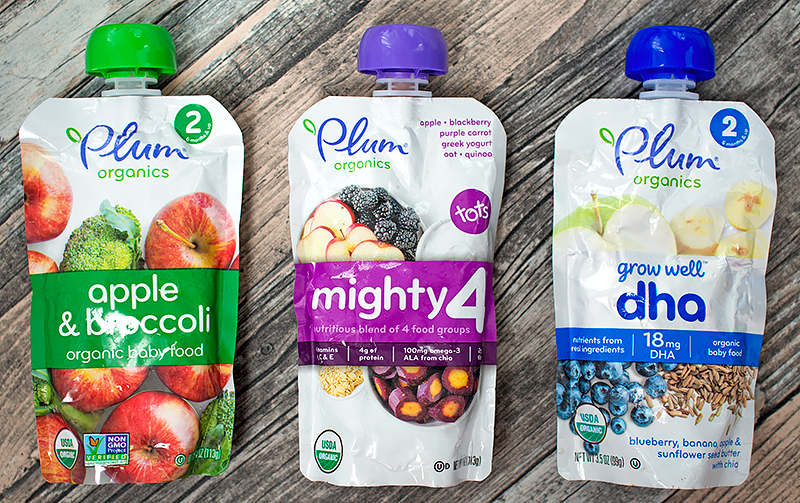
Like many other fruits, plums are very delicate. While plums will store well, you should purchase them for use within a week as the longer they are stored, the more they become bruised and softened. Choose plums without bruising, soft spots or cuts.
When selecting dried prunes/plums, always try to purchase natural, those that have not been dried with any type of sulphurs. Many health food stores and conventional grocers are now carrying plums that are not dried and preserved with chemicals.
Prunes are always dried plums no matter the method use to “make” them. However not all plums are made into prunes. Many commercial prunes are now being called “dried plums” as marketers have found the public is more receptive to purchasing dried plums rather than “prunes”. If you ever get the chance, compare “real” dried prunes to those that you will find in a can or packet in the grocery store.
Plums that are dried either via a fan, a food dehydrator or dried in the sun will not be as slimy looking nor will they be as shriveled as many commercially dried plums/prunes.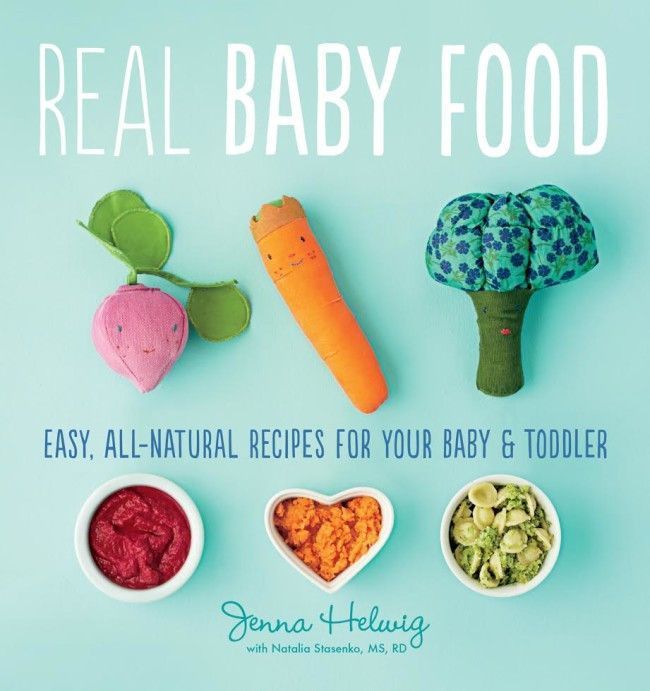 Think of it as you think of the difference when looking at homemade baby food and commercial baby food; it’s difficult to imagine how they can possibly be so dissimilar.
Think of it as you think of the difference when looking at homemade baby food and commercial baby food; it’s difficult to imagine how they can possibly be so dissimilar.
Easy and Tasty Plum and Prune Baby Food Recipes:
Plum Purée – 4 Ways to Make Plum Puree for Baby Food
A) Steam
Use any number of ripe plums that you desire.
Peel, pit and cut plums into chunks and steam until tender in a scant amount of water. Puree using the leftover cooking liquid
B) Blanch
Step 1: Scrub fruit clean
Step 2: Carve an X into 1 side of the fruit
Step 3: Place X side down in a pan with an inch of water
Step 4: Bring water to a boil and steam until soft and tender
Step 5: Peel skin from fruit and remove pits and/or seeds
C) Bake
Halve the fruit, pit and place “open” side down in a pan filled with 1 inch of water, bake at 400F until soft and tender or puckering of the skin appears.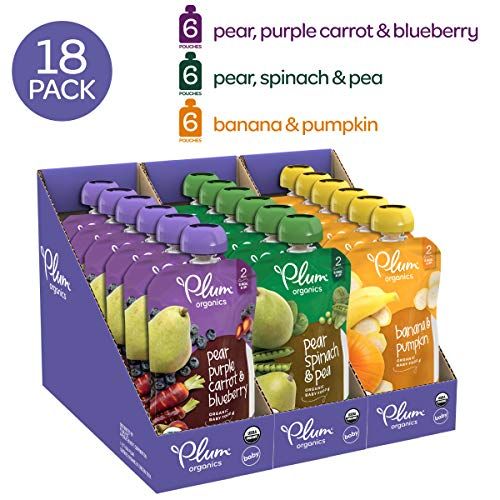
D) Drop & Roll
Drop whole, cleansed fruits into a pan of boiling water for 5-10 minutes, until fruits are soft
Place fruits into a bowl of cold water, roll around and slip off the skins then cut and pit the fruit. Puree as with any other fruit, adding lots of liquid if needed.
Plum Baby Food Recipes – “Dried” Prune Puree
- 1 small bag of dried prunes
Step 1: Soak dried prunes in warm water until they plump up or steam gently.
Step 2: Once plump and tender, toss into food processor or blender and begin to puree.
Step 3: Add liquid without sparing any. Prunes tend to become a pasty gluey consistency when pureed and the more water you add, the easier it is to puree to a texture your baby will tolerate.
Like apricots, prune puree will not freeze into a solid block. The skins should not pose an issue however do be certain to keep a watch for baby’s adverse reaction to the possible texture. You may wish to mix the pureed prunes with a beloved food for the first try.
You may wish to mix the pureed prunes with a beloved food for the first try.
Creamy Plum Purée Baby Food Recipe
8 months + due to Yogurt
- 1 cup plum purée
- Plain or Vanilla Yogurt and/or
- Apple or Pear Juice or plain water
Add plum purée and Yogurt and/or Juice or water until the proper consistency for your baby is achieved. Puree in a blender or food processor if needed.
Cranberry (or Blueberry) Apple Plum Purée & Sauce
8 months + due to spices, cranberries and blueberries
- 1 peeled, cored, diced apple
- 2 handfuls of fresh cranberries or blueberries
- 2 peeled, pitted and diced plums
- 1 cup water
- 1 tsp vanilla
Add all fruits and water to a medium saucepan.
Bring mixture to a boil over medium high heat.
Turn to simmer and check frequently so as not to run out of water.
Add more water if needed and simmer for approx. 20 minutes or until all fruit is soft and tender and cranberries have popped
Allow to cool and then blend or puree as needed for your baby’s preferences – Add to cereals, yogurt or even drizzle sauce over meat puree or meat dices.
Plum Chicken
8 months + due chicken
- 3 plums
- 1 chicken breast
Peel, pit and cut plums into dices
Cut chicken breast into dices
Add chicken and plums to a saucepan and add 1 cup of water
Simmer until the chicken is fully cooked
Puree, Chop or Mash as needed for your baby’s texture preferences
Foods Good to Mix With Plums for Homemade Baby Food:
- Apples
- Blueberries
- Cranberries
- Peaches
- Melons
- Chicken
- Yogurt
Remember, always consult with your pediatrician regarding introducing solid foods to your baby and specifically discuss any foods that may pose allergy risks for your baby.
This site complies with the HONcode standard for trustworthy health information: verify here.
ORAL ALLERGY SYNDROME
The food on this page may be one involving OAS. OAS occurs when a person sensitive/allergic to pollen develops a reaction to fruits/veggies that have a similar type of pollen.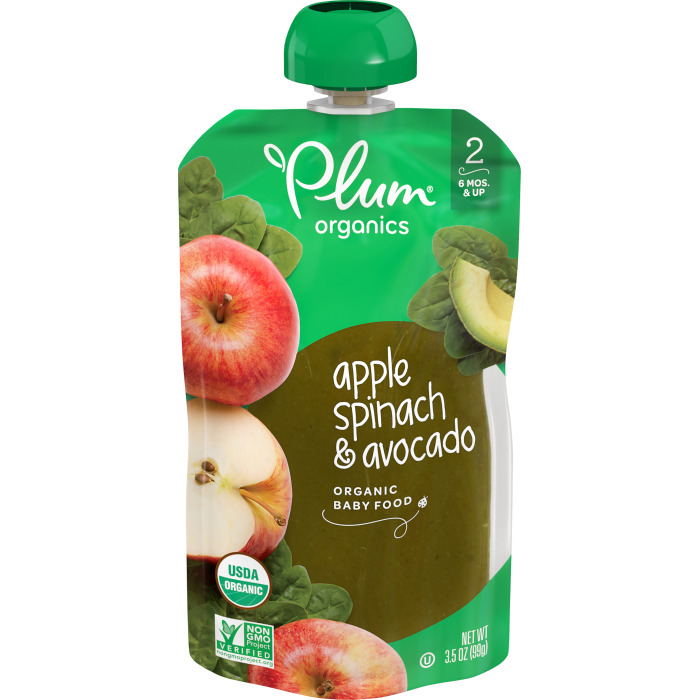 Itching & swelling of the lips, the mouth and/or throat are typical symptoms. These symptoms normally appear within minutes of eating the offending food and may be worse during the spring and fall pollen seasons. Rarely is an OAS life threatening. Click below to learn more.
Itching & swelling of the lips, the mouth and/or throat are typical symptoms. These symptoms normally appear within minutes of eating the offending food and may be worse during the spring and fall pollen seasons. Rarely is an OAS life threatening. Click below to learn more.
Birch Pollen Allergies
Birch pollen allergies are associated with apple, carrot, cherry, pear, peach, plum, fennel, walnut, potato, spinach, buckwheat, peanut, honey, celery, and kiwifruit.
Cedar Allergies
Japanese cedar allergies are associated with melon, apple, peach and kiwifruit.
Mugwort Allergies
Mugwort allergies are associated with celery, carrot, spices, melon, watermelon, apple, hazelnut, and chestnut.
Grass Pollen
Grass pollen allergies are associated with melon, tomato, watermelon, orange, rice and cherry.
Ragweed Pollen
Ragweed allergies are associated with melon, chamomile, honey, banana, and sunflower seeds.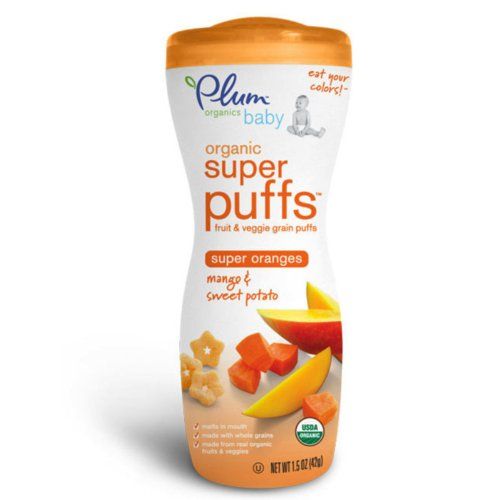
Latex
Latex allergies may be cross-reactive to banana, avocado, kiwi and papaya.
Using frozen peaches is a great way to offer your baby “fresh”, in-season peaches all year long.
Take a few slices or dices out of the bag and then gently steam or simply thaw and mash/puree. You can refreeze steamed peaches if you wish but making a few servings at a time to store in the refrigerator is best.
Quick Links
- Juice for Baby?
- Transitioning to Sippy Cups
- Water, is it Necessary for Baby?
- Constipation and Solid Foods
SHARE ON FACEBOOK SHARE ON PINTEREST
Stage 1 Homemade Baby Food Recipes for Baby 4 to 6 Months and older.
Stage One Baby Foods – Commonly Offered Stage 1 Baby Foods:
Stage 1 Fruits:
Apples | Avocados | Apricots | Bananas | Mango | Nectarines & Peaches | Papaya | Pears | Plums & Prunes | Pumpkin
Stage 1 Veggies:
Beans (Green) | Carrots | Peas | Sweet Potato | Squash
Stage 1 Grains:
Rice | Oatmeal | Barley
What is a “Stage 1” baby food?
(4) 6-8 Months –
Baby Let’s Begin to Eat“Baby” cereal and soft cooked thinly pureed fruits and veggies should be baby’s first solid food experiences.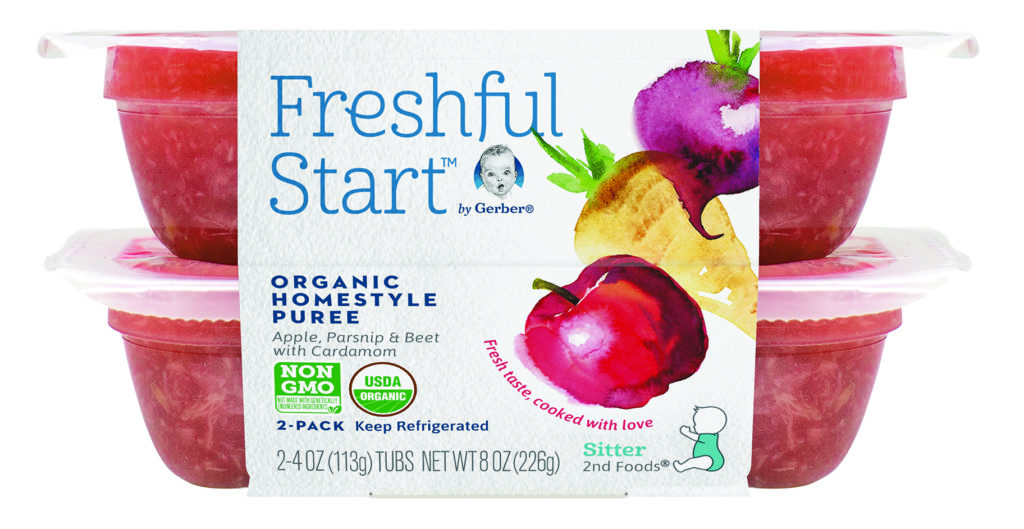 Single ingredients only and at a space of 4 days apart with introducing each new food. You may skip the cereal and begin with a fruit like avocado or begin with a veggie like butternut squash or sweet potato.
Single ingredients only and at a space of 4 days apart with introducing each new food. You may skip the cereal and begin with a fruit like avocado or begin with a veggie like butternut squash or sweet potato.
Stage 1 Baby Food is a term that applies to baby foods that are highly pureed and strained. These foods are appropriate for babies who are just being introduced to solid foods. The foods in this range are targeted to babies who are between the ages of (4) 6 to 8 months old.
Stage 1 baby foods are thin and runny and are foods that are the lowest on the allergy scale. Stage 1 baby foods are typically those foods that are also more easily digested by a tiny tummy. Some of these foods include, sweet potatoes, butternut or winter squash and carrots. The term “Stage 1” was introduced by the Beechnut Baby Food Company to let parents know that these foods are appropriate for their infants who are just being introduced to solid foods.
There is a growing trend of parents skipping “stage 1” foods that are thin and runny purees. Many parents are turning to a more baby-led weaning approach and are offering soft cooked small bits of age-appropriate foods as they begin to introduce solid foods. Your baby might just be interested in this feeding approach!
Stage 1 Homemade Baby Food Recipes – Cereal, Fruits & Veggies
Rice Cereal- 1/4 c. rice powder (brown rice ground in blender or food processor)
- 1 cup water
Step 1: Bring liquid to boil in saucepan. Add the rice powder while stirring constantly.
Step 2: Simmer for 10 minutes, whisking constantly, mix in formula or breast milk and fruits if desired
Step 3: Serve warm.
Oatmeal Cereal
- 1/4 c. of ground oats (do NOT use instant or Quick Cook), ground in blender or food processor
- 3/4 c.
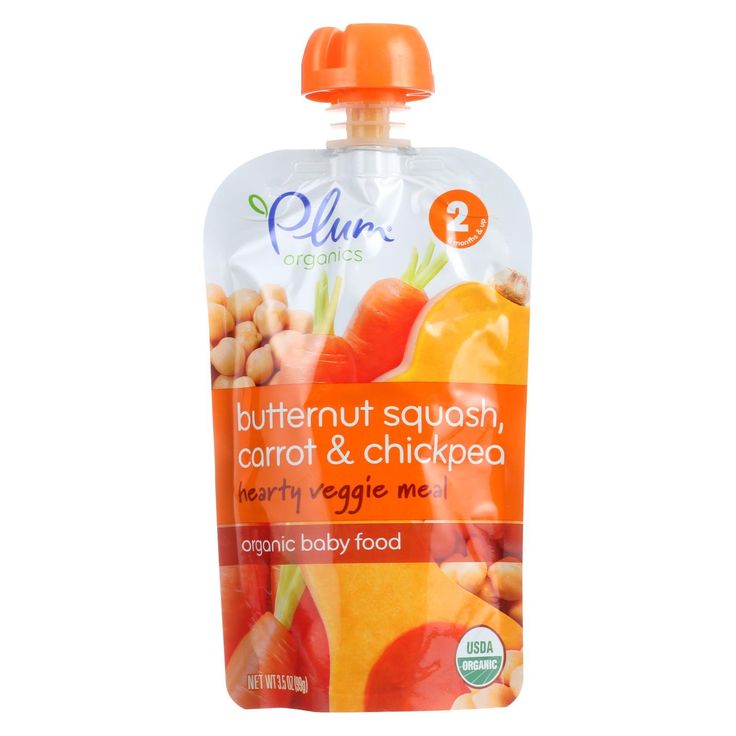 water
water
Step 1: Bring liquid to boil in saucepan. Add the rice powder while stirring constantly.
Step 2: Simmer for 10 minutes, whisking constantly, mix in formula or breast milk and fruits if desired
Step 3: Serve warm.
Barley Cereal
- 1/4 c. ground barley (barley ground in blender or food processor)
- 1 cup water
Step 1: Bring liquid to a boil. Add the barley and simmer for 10 minutes, whisking constantly
Step 2: Mix in formula or breast milk or juice and add fruits if desired
Step 3: Serve warm
Did you know that baby’s first food does not have to be a commercial infant rice cereal? Many pediatric resources are acknowledging the fact that avocado, banana and sweet potato make great first foods for baby. For More Information About Homemade Baby Cereal, visit Our Homemade Baby Cereal FAQ
Feeding Baby Stage 1 Baby Foods
Start out slowly, preparing a tablespoon sized portion of whatever food you have chosen to begin with. Some parents begin offering their babies solid foods by using their (clean and washed) finger as a spoon. They say that this helps their babies take to solid foods because the “new” spoon and the “new” food all at once seem to confuse baby.
Some parents begin offering their babies solid foods by using their (clean and washed) finger as a spoon. They say that this helps their babies take to solid foods because the “new” spoon and the “new” food all at once seem to confuse baby.
You will probably only manage to have baby eat 1/2 of the tablespoon sized portion the very first times you begin solids. Don’t fret if your baby does not “finish” a meal.
Apricot Puree 6-8 months+ (using dried un-sulphured apricots)
Vitamins: A, C, Folate
Minerals: Potassium, Phosphorus, Calcium
- 1 pound dried apricots
- 2 cups of white grape juice, pear or apple juice. Plain water is ok but the puree may be a bit bitter.
Step 1: Bring liquid and fruit to a boil and simmer for 15 minutes.
Step 2: Reserve any left over liquid to use for the puree
Step 3: Place into your choice of appliance for pureeing and begin pureeing.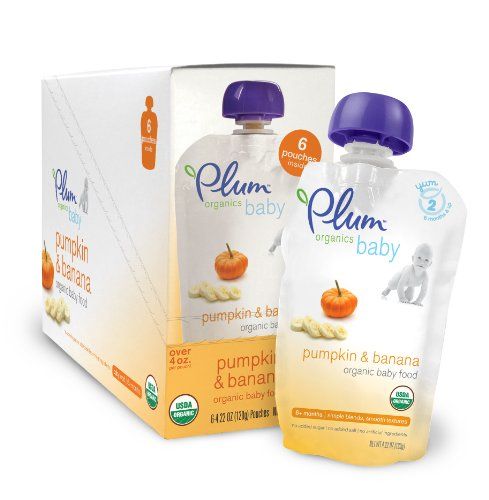
Step 4: Add the reserved liquid as necessary to achieve a smooth, thin puree or
Step 5: Add cereal (if desired) to thicken up
Step 6: Note: puree will not freeze solid, but into slightly soft/slightly frozen cubes.
Have you ever Baked Fruits? If not, I highly recommend it. Baked fruits are naturally sweet, soft and oh so very yummy.
Apples/Applesauce (4)6 months+ Try Gala, Braeburn, Rome or Macs)
Vitamins: A, C, Folate
Minerals: Potassium, Magnesium, Calcium
This recipe is written so that you may use any amount of apples you wish.
Step 1: Peel, core and cut apple into slices/chunks
Step 2: Place slices or chunks into a pan with just enough water to slightly cover apples
Step 3: Boil/steam until tender; be sure to check on the water level and stir, T hat’s It. Easy Peasy.
Step 4: Apples may be mashed with a potato masher to achieve a smooth applesauce consistency. If your masher will not achieve a puree type of consistency, then follow steps 5 – 7
Step 5: Reserve any left over water to use for thinning out the apples
Step 6: Place into your choice of appliance for pureeing and begin pureeing.
Step 7: Add the reserved water as necessary to achieve a smooth, thin puree
Step 8: Add cereal (if desired) to thicken up the
Step 9: Ask your pediatrician about adding some cinnamon for new tastes.
You may also buy an “Adult” jar of Natural applesauce from your local grocers. Make sure you buy Natural Applesauce however. Read the labels if you are unsure. The only ingredients should be apples and water or just apples. A few companies may add ascorbic acid (vitamin C) or citric acid to their Natural Applesauce; this is fine.
Avocado (yes, avocado is a fruit.) (4)6 months+
Vitamins: A, C, Niacin, Folate
Minerals: Potassium, Phosphorus, Iron, Magnesium, Calcium
Step 1: Peel and take out the pit of a ripe avocado – do not cook
Step 2: Cut “meat” out and mash with a fork
Step 3: There should be no need to use a machine as just like bananas, avocados have a very soft consistency and texture. Avocados do not need to be cooked.
Visit the Avocado Baby Food page for more recipes and Information
Baked Apples 6-8 months+
Step 1: Core apple and leave peel on
Step 2: Place a wee bit of butter (if baby is ready for or has had dairy) on the inside of the cored apple (sprinkle a bit of cinnamon in the apple if your desire and if baby is ready for or has had cinnamon)
Step 3: Place in a pan with just enough water to slightly cover apples – about an inch of water
Step 4: Bake in a 400-degree oven for 30 minutes or until tender; be sure to check on the water level.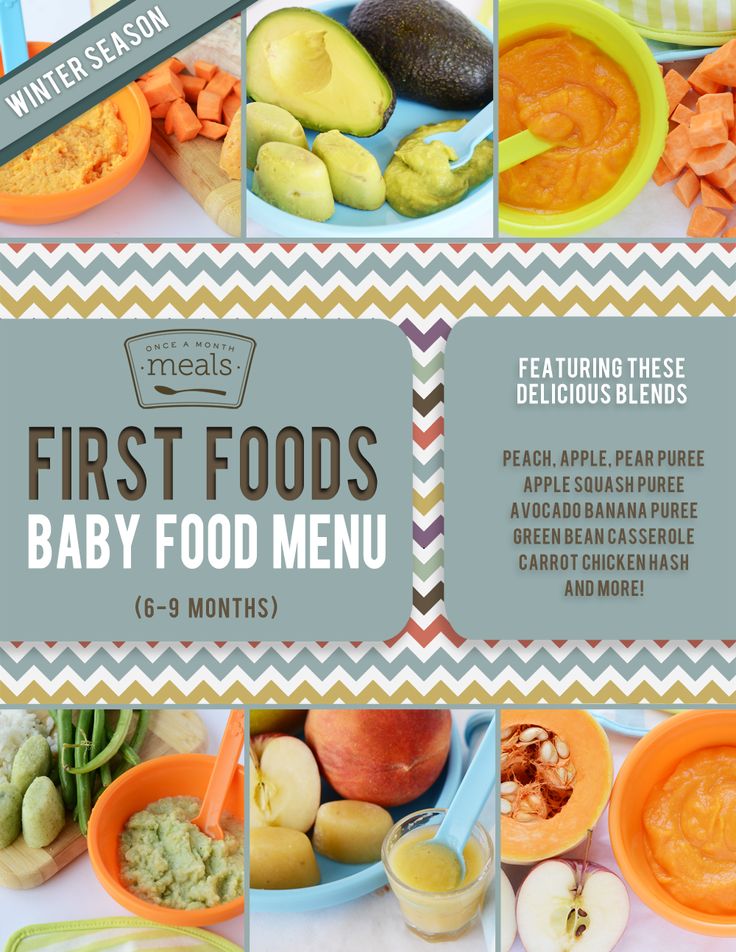
Step 5: Once baked, either cut apple into little bits and serve as a finger food or mash as directed above in the Apples/Applesauce recipe.
Banana Applesauce Mush (4)6 months+
- 1 apple
- 1 ripe banana
Step 1: Peel, core and cut apple into slices/chunks
Step 2: Place slices or chunks into a pan with just enough water to slightly cover apples
Step 3: Boil until tender; be sure to check on the water level.
Step 4: Apples may be mashed with a potato masher to achieve a smooth applesauce consistency or you can puree in an appliance as shown above
Step 5: Peel a ripe banana and mash in a bowl with a fork (heating in the microwave for approximately 20 seconds will soften the banana up if needed)
Step 6: Add applesauce to the banana and sprinkle with wheat germ* or crushed cheerios*
Step 7: Puree if necessary but mashing with a potato masher will typically get this mix smooth
*8 months+
Back to Top
Bananas (4)6 months+
Vitamins: A, C, Folate
Minerals: Potassium, Phosphorus, Selenium, Magnesium, Calcium
- 1 Banana or however many you wish
Step 1: Peel ripe banana – do not cook
Step 2: Place banana in a food processor/food mill or blender and puree
Step 3: You can also mash the banana in a bowl using a regular fork – heat in microwave for 25 seconds prior to mashing for extra softness
Step 4: Add formula/breast milk or water to thin or add cereal (if desired) to thicken up.
Mango Madness 6-8months+
Vitamins: A (1262 IU in one cup), C, E, K, Folate
Minerals: Potassium, Phosphorus, Magnesium, Calcium, Sodium
- 1 Ripe Mango
Step 1: Peel, de- seed and chunk the mango
Step 2: Place mango chunks in a blender or food processor
Step 3: Add Formula, Breast Milk, or Water and blend or mash until the proper consistency for your Infant is achieved.
How to Cut A Mango:
Cut the mango lengthwise, along the side of the mango pit. You will be cutting off its flesh from one side then repeating the same process on the other side. You will then cut the ends off the mango pit.
Cut the remaining flesh from the pit. Use a small sharp knife peel the skin from the flesh. Dice or cube as desired. It is easier to make your cubes/dices prior to removing the skin. Make sure you don’t cut through it. Once you have made your cube/dice “pattern” simply turn the skin skin inside out and slice the pieces away.
*Mango does not need to be cooked as it is typically introduced at an age where baby can tolerate raw fruits. Mango may be steamed to tender and then mashed if you prefer without harming it.
You may use mango as a great Baby Finger Foods. Simply peel, de-seed and then cut into dices or chunks that are manageable for your baby. You may wish to coat the mango pieces with “cheerio dust”, wheat germ or another cereal “dust” to help baby easily pick up the bits.
Papaya 6-8months+
Vitamins: A, C, Folate
Minerals: Potassium, Calcium
- 1 ripe papaya
Step 1: Peel, de-seed and chunk the papaya
Step 2: Place papaya chunks in a blender or food processor
Step 3: Add formula, breast milk, or water and blend or mash until the proper consistency for your Infant is achieved.
Some parents who have infants with sensitive tummies will give fruits a gentle steaming to help break down the sugars and fibers for easier digestion.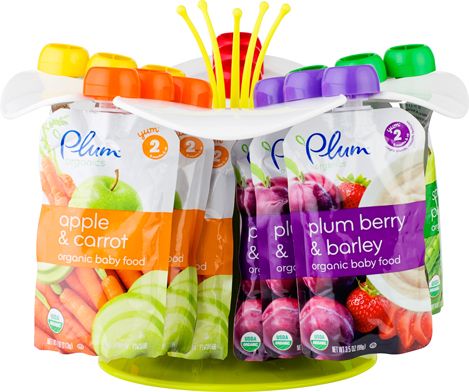 If you feel this is the case for your infant, chunk the papaya and then steam for 5-10 minutes until very soft.
If you feel this is the case for your infant, chunk the papaya and then steam for 5-10 minutes until very soft.
Pears, Plums, Peaches and Nectarines too
Pear (Great for Constipation.) (4)6 months+Vitamins: A, C, Folate
Minerals: Potassium, Phosphorus, Magnesium, Calcium
Step 1: Peel and cut into chunks so as to avoid the little seed portion.
Step 2: Steam gently until tender if baby is under 6 months.
Step 3: Place in a blender/food processor and puree until smooth; you may be able to just use a fork!
Step 4: Use the leftover cooking water if needed but Pears tend to be very runny and watery without adding liquid.
Step 5: Add some baby cereal to thicken if needed.
Plums (4)6-8 months+
Vitamins: A, C, Folate
Minerals: Potassium, Phosphorus, Magnesium, Calcium
- 2-3 ripe plums
Step 1: Peel and pit the plums
Step 2: Cut into chunks
Step 3: Steam until tender in a scant amount of water if baby is under 6 months.
Step 4: Puree using the leftover cooking liquid.
You may need to mix in another fruit as plum purée has a tendency to be rather tart and/or bitter
Peaches (4)6-8 months+
Vitamins: A, C, Folate
Minerals: Potassium, Phosphorus, Magnesium, Calcium
You may steam or bake peaches; these methods work for nectarines, plums and pears as well. I HIGHLY recommend giving baked peaches a try at least once. You will find they are more tasty when baked.
Steam Peaches – Method 1
Step 1: Scrub fruit clean and carve an X into 1 side of the fruit
Step 2: Place X side down in a pan with an inch of water
Step 3: Bring water to a boil and steam until soft and tender
Step 4: Peel skin from fruit and remove pits and/or seeds
Step 5: Move to step #6 below
Steam Peaches – Method 2
Step 1: Peel fruit
Step 2: Pit the peach
Step 3: Cut the peach into dices
Step 4: Steam until soft and tender then
Step 5: Move to step #6 below
Bake
Step 1: Halve the fruit and place “open” side down in a pan filled with 1 inch of water
Step 2: Bake at 400F until soft and tender and/or puckering of the skin appears.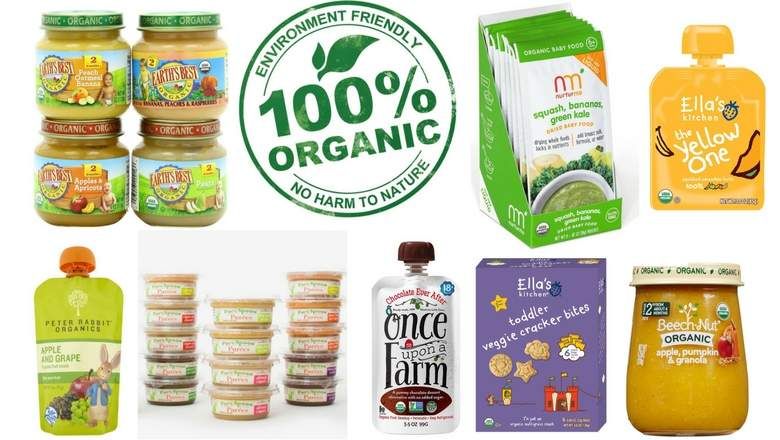
Step 3: Peel skin from fruit and remove pits and/or seeds then
Step 4: move to step #6
Step 5: Reserve any left over water to use for thinning out the fruits
Step 6: Peel off skin then place into your choice of appliance for pureeing and begin pureeing.
Step 7: Add the reserved water as necessary to achieve a smooth, thin puree
Step 8: Add cereal (if desired) to thicken up.
Back to Top
Prunes 6-8 months+
Vitamins: A, C, Folate
Minerals: Potassium, Phosphorus, Magnesium, Calcium
- 1 small bag of dried prunes (try to use unsulphured dried fruits whenever possible!)
Step 1: Soak dried prunes in warm water until they plump up or steam gently.
Step 2: Once plump and tender, toss into food processor or blender and begin to puree.
Step 3: Add liquid without sparing any. Prunes tend to become a pasty gluey consistency when pureed and the more water you add, the easier it is to puree to a texture your baby will tolerate.
Prunes tend to become a pasty gluey consistency when pureed and the more water you add, the easier it is to puree to a texture your baby will tolerate.
Pumpkin (4)6-8months+
Read more about Pumpkin on the Pumpkin Baby Food page
Vitamins: A (12230 IU in 1 cup.), C, K, Folate, Niacin
Minerals: Potassium, Phosphorus, Magnesium, Calcium, Iron
- 1 medium sugar pumpkin, no heavier than 5 pounds
Step 1: Cut sugar pumpkin (the kind meant to be baked and eaten.) in half, scoop out seeds
Step 2: Place an inch of water in a baking pan, then place the halves “face” down in the pan. Check on water level while baking
Step 3: Bake in a 400 degree oven for 40 minutes or until the “shell/skin” puckers and halves feel soft then scoop squash “meat” out of the shell
Step 4: Place pumpkin “meat” into your choice of appliance for pureeing and begin pureeing.
Step 5: Add water as necessary to achieve a smooth, thin consistency.
Step 6: You can also peel the pumpkin, scoop out the seeds and then cut into chunks and boil/steam until tender (like when boiling potatoes for mashed potatoes) then follow steps 4 and 5.
You may also buy a can of pumpkin from your local grocers. Make sure you buy Pumpkin and NOT Pumpkin Pie mix however. Read the labels if you are unsure. The only ingredients should be pumpkin and water or just pumpkin. You do not need to cook canned pumpkin. You may thin the pumpkin with whatever liquid you prefer and then serve or warm and serve. You may also freeze canned pumpkin in ice cube trays if you wish.
Green Beans (4) 6 months+
(this method may be used for Peas as well)*
Vitamins A, C, K, Niacin, Folate
Minerals:Potassium, Sodium, Phosphorus, Iron, Magnesium, Calcium
Step 1: If using Fresh Beans, snap the ends off the beans and wash the beans. If using Fresh Peas, open the pods and scrape out the peas from the pod. If using frozen of either Peas or Green Beans, cook according to package directions.
If using Fresh Peas, open the pods and scrape out the peas from the pod. If using frozen of either Peas or Green Beans, cook according to package directions.
Step 2: Place fresh beans into a steamer basket in a pan with a just enough water to slightly show through in the basket.
Step 3: Steam until very tender; be sure to check on the water level.
Step 4: Reserve any left over water to use for thinning out the beans.
Step 5: Place into your choice of appliance for pureeing and begin pureeing. It is best to use the setting that makes the finest liquid purees – green bean and pea skins are rather difficult to completely puree.
***Using a blender rather than a food processor or stick mixer might be better as well. ***
6. Add the reserved water as necessary to achieve a smooth, thin consistency
7. You may wish to push the green beans (or peas) through a sieve or mesh strainer to get rid of any remaining skins.
Carrots* 6-8 months+
Vitamins A (19,152 IU), C, Folate
Minerals:Potassium, Sodium, Phosphorous, Iron, Magnesium, Calcium
Step 1: Peel carrots and cut into small chunks
Step 2: Place chunks into a steamer pan with just enough water visible through the steamer basket
Step 3: Steam until tender
Step 4: Do not reserve any left over water to use for thinning out the carrots if baby is under 8 months old as Nitrates may seep into the cooking water
Step 5: Place into your choice of appliance for pureeing and begin pureeing.
Step 6: Add water as necessary to achieve a smooth, thin consistency
*(See Our article on Nitrates)
Garden Vegetable Combo
6-8 months+ after all vegetables have been introduced following the 4 Day Wait Rule
Green Beans, Summer Squash, Peas and Carrots
Step 1: Combine fresh or frozen green beans and peas, summer and/or zucchini squash and small pieces of chopped carrots.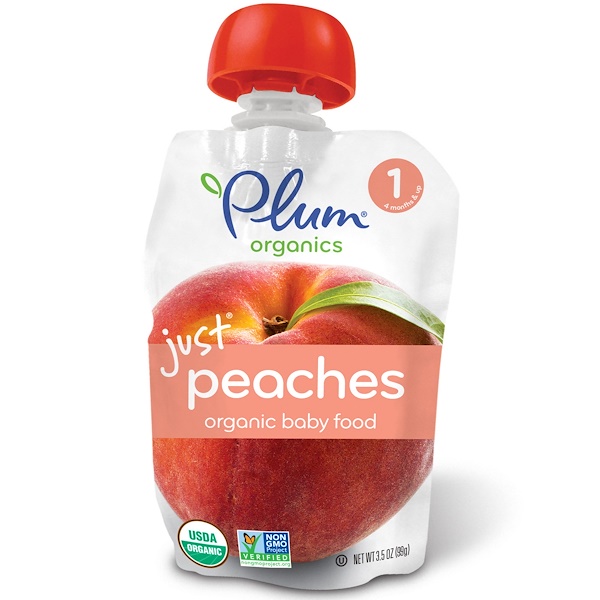
Step 2: Add enough water to just cover the vegetables.
Step 3: Cook until tender, reserving water.
Step 4: Puree vegetables in blender or food processor,
Step 5: Adding reserved water from the vegetables until mixture is of the desired consistency.
Peas
Vitamins A (4533 IU), C, Niacin, Folate
Minerals: Potassium, Sodium, Selenium, Phosphorous, Iron, Magnesium, Calcium, Zinc
Step 1: If using Fresh Peas, open the pods and scrape out the peas from the pod. If using frozen type of either Peas or Green Beans, cook according to package directions.
Step 2: Place fresh peas into a steamer basket in a pan with a just enough water to slightly show through in the basket.
Step 3: Steam until very tender; be sure to check on the water level.
Step 4: Reserve any left over water to use for thinning out the peas.
Step 5: Place into your choice of appliance for pureeing and begin pureeing. It is best to use the setting that makes the finest liquid purees – green bean and pea skins are rather difficult to completely puree. Using a blender rather than a food processor or stick mixer might be better as well.
Step 6: Add the reserved water as necessary to achieve a smooth, thin consistency
Step 7: You may wish to push the peas (or green beans) through a sieve or mesh strainer to get rid of any remaining skins
Why can’t I get peas and green beans to puree smooth?
If you are using a Food Processor, try the Blender. The Blender seems to work the best for getting Peas into a more fine puree. Peas and green beans are very hard to get pureed into a very fine, smooth consistency. You can put them in a strainer and work out the “skins” if using fresh or you can use frozen for a smoother consistency and minimal effort to work out the “skins”.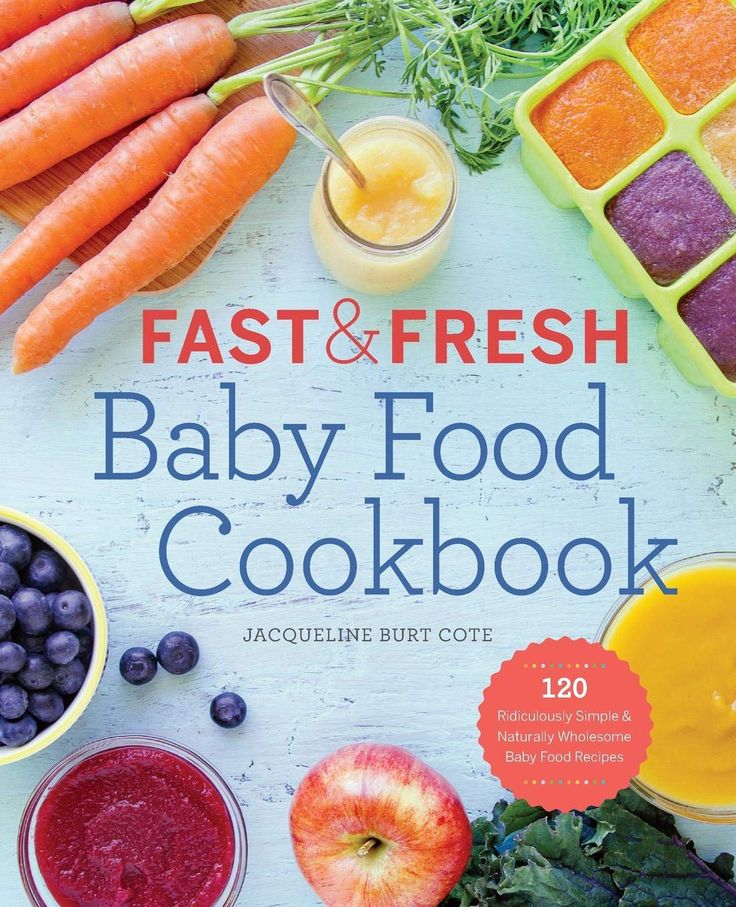
Another method for getting beans and peas smoother is to immediately plunge them into ice cold water once you remove them from the stove top. Once cooled, puree as usual.
You may also use beans/legumes (kidney beans, lentils, split peas etc..) if your doctor says it is OK for baby’s age.
Please keep in mind that you will never be able to achieve the consistency equal to that of the baby food that comes in jars. Some parents choose to leave green beans and peas for later introduction, when baby enjoys texture and is able to eat them as Baby Finger Foods
Squash (Winter – Butternut, Acorn, Hubbard) (4) 6 months+
(nutrient info for squash of all types may be found at the Squash for Baby page)
- 1 medium sized butternut or acorn squash
Step 1: Cut acorn, hubbard, or butternut squash in half, scoop out seeds
Step 2: Place an inch of water in a baking pan, then place squash halves “face” down
in the pan.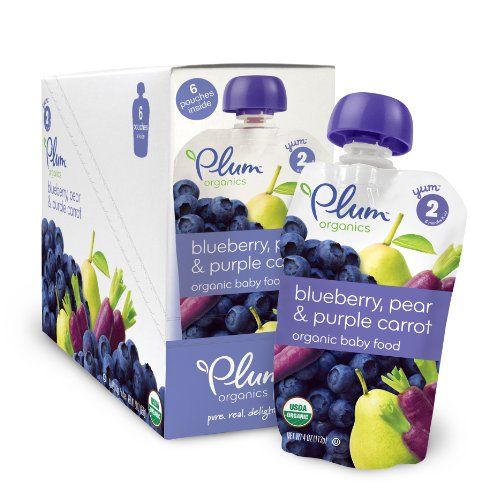 Check on water level while baking
Check on water level while baking
Step 3: Bake in a 400 degree oven for 40 minutes or until the “shell/skin” puckers and halves feel soft then scoop squash “meat” out of the shell
Step 4: Place squash “meat” into your choice of appliance for pureeing and begin pureeing.
Step 5: Add water as necessary to achieve a smooth, thin consistency.
Step 6: You can also peel the squash, scoop out the seeds and then cut into chunks and boil/steam until tender (like when boiling potatoes for mashed potatoes) then follow steps 4 and 5
Squash (Summer/Zucchini) 6-8 months+
nutrient info for squash of all types may be found at the “Tips on Squash” page
- 3-4 small to medium sized yellow squash or zucchini
Step 1: Choose yellow squash or zucchini that are somewhat small in diameter, as these are the most tender.
Step 2: Wash squash thoroughly and cut into small slices or chunks.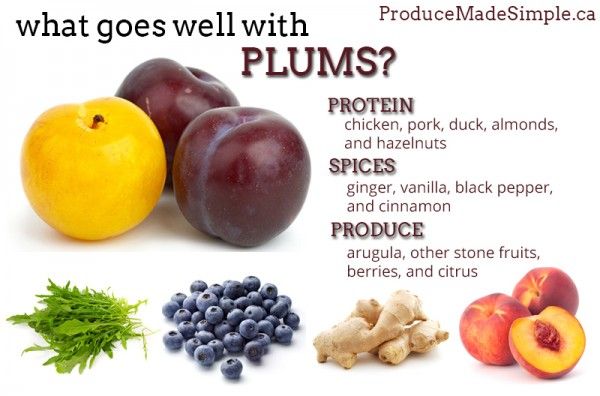 Do not remove skins.
Do not remove skins.
*You may remove skins however an infant over the age of 8 months old should be able to digest squash puree with skins on
Step 3: Steam until tender then place into your choice of appliance for pureeing and begin pureeing.
Step 4: Add water as necessary to achieve a smooth, thin consistency
Yams/Sweet Potato (4)6 months+
Learn why a Yam really is NOT a Yam
Vitamins A (24,877 mg ), C, Folate
Minerals:Potassium, Sodium, Selenium, Phosphorous, Magnesium, Calcium
Step 1: Wash and poke holes in sweet potato with fork then wrap sweet potatoes in tin foil – do not peel for baking/microwaving (you can also do this in the microwave – only use plastic wrap and cook for 8 minutes on high or until tender).
Step 2: Place in a 400 degree oven and bake for 30 minutes or until soft
OR
Step 1: Peel sweet potatoes and cut into small chunks
Step 2: Place chunks into a pan with just enough water to slightly cover potato
Step 3: “Steam” boil until tender, be sure to check on the water level.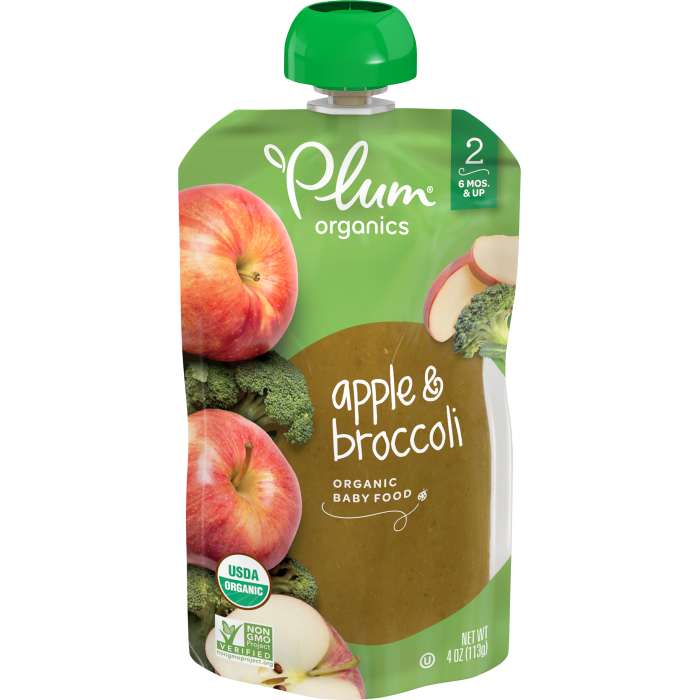
Step 4: Reserve any left over water to use for thinning out the sweet potatoes
Step 5: If you have baked your sweet potato, remove skins and use liquid from your preferred source
Step 6: Place sweet potato into your choice of appliance for pureeing and begin pureeing.
Step 7: Add the reserved water or other liquid as necessary to achieve a smooth, thin consistency
Remember, always consult with your pediatrician regarding introducing solid foods to your baby and specifically discuss any foods that may pose allergy risks for your baby.
These Stage 1 Homemade Baby Food Recipes are age appropriate for those babies who are between 4 and 6 months of age. Many babies start solid foods between 4 months and 6 months. Stage One fruits and veggies we have included are foods that your 4 month old baby who is a beginning eater will be able to tolerate. Of course, these recipes are also just yummy for babies who are older as well!
Of course, these recipes are also just yummy for babies who are older as well!
SHARE ON FACEBOOK SHARE ON PINTEREST
Plums in baby food
Feature : has a laxative effect. In the children's diet can be introduced from 8 months.
Plum is a genus of fruit-bearing stone plants. For the first time, this culture began to be grown in the Caucasus, Asia Minor and Northern Iran. Today it can grow in all countries with a temperate and cold climate.
There are many varieties of plums, among which there are three main varieties: East Asian, European and Japanese plums. Fruit color can vary from yellow to dark purple. The plum skin is smooth, the fruits are oval or rounded, sweet in taste. nine0003
100 grams of plum contains 49 kcal
| Vitamins | Macronutrients | Microelements |
| Vitamin PP - 0. Beta-carotene - 0.1 mg Vitamin A (RE) - 17 mcg Vitamin B1 (thiamine) - 0.06 mg Vitamin B2 (riboflavin) - 0.04 mg Vitamin B5 (pantothenic) - 0.2 mg Vitamin B6 (pyridoxine) - 0.08 mg Vitamin B9 (folic) - 1.5 mcg Vitamin C - 10mg Vitamin E (TE) - 0.6 mg Vitamin PP (niacin equivalent) - 0.7mg | Calcium - 20 mg Magnesium - 9 mg Sodium - 18 mg Potassium - 214 mg Phosphorus - 20 mg Chlorine - 1 mg Sulfur - 6 mg | Iron - 0.5 mg Zinc - 0.1 mg Iodine - 4 mcg Copper - 87 mcg Manganese - 0.11 mg Chromium - 4 mcg Fluorine - 2 mcg Molybdenum - 8 mcg Silicon - 4 mg Cobalt - 1 mcg Nickel - 15 mcg |
Plum leaves contain curamine. It promotes the expansion of the coronary vessels and prevents the formation of blood clots in the blood vessels.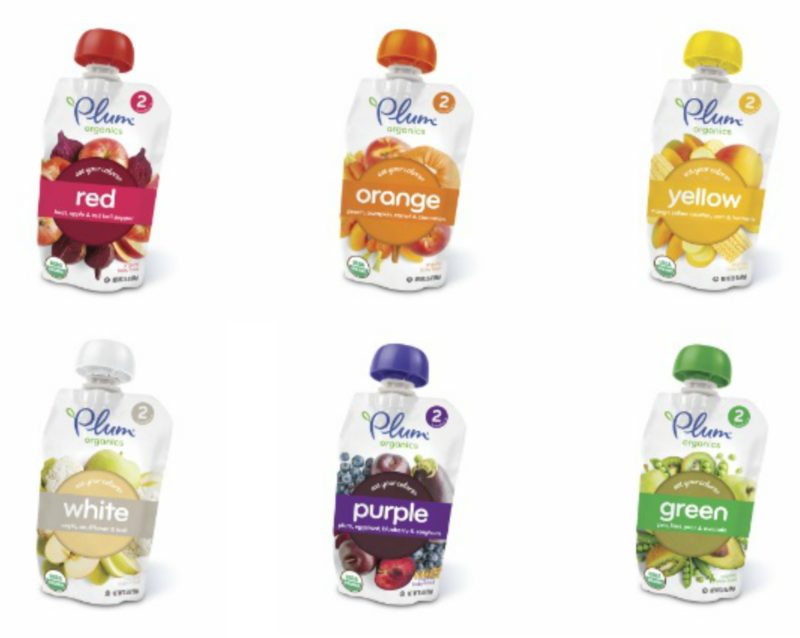
Composition and nutritional properties of plums
100 g plums contain:
- Proteins - 0.8 g
- Fats - 0.3 g
- Carbohydrates - 9.6 g
- Dietary fiber - 1.5 g
- Organic acids - 1 g
- Water - 86.3 g
- Mono- and disaccharides - 9.5 g
- Starch - 0.1 g
- Ash - 0.5 g
Benefits of plums
Plum contains many vitamins, minerals and other useful substances. It is also known for its medicinal properties. Experts recommend using plums for those who suffer from hypertension, atherosclerosis, diseases of the liver, kidneys and gastrointestinal tract, rheumatism, and fever. nine0003
In addition, plums are useful for constipation, for the prevention of anemia, normalization of the nervous system, disinfection of the oral cavity and gastrointestinal tract, combating fatigue and insomnia. Also, plums can increase appetite and mood, remove cholesterol from the body, positively affect vision, and make the skin smoother and more elastic.
Read also: Fruits in the baby's menu
Contraindications for use
Plums are not recommended for diabetes and obesity, as well as for the body's tendency to allergies. nine0003
Plums in baby food
In the fruits of plums, tannins and pectins are very successfully combined, which are very useful for the child's body. Also in the composition of the plum there are vitamins P, PP, C, K, E, and vitamins of group B. You can enter into the diet of a child from 8 months.
Preparation and consistency
After the baby is 6 months old, pediatricians recommend trying to give the baby juice from plums, but no more than one teaspoon. After 7 months, you can increase the portion to 50-60 g, after a year - up to 100 g. You can also gradually introduce plums into various dishes. nine0003
Plum Recipes for Children
Fresh plum compote - from 6 months.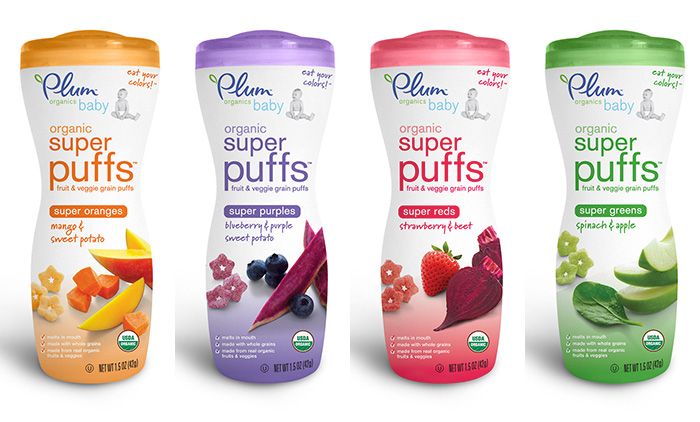
Ingredients:
- Plum - 250 g
- Water - 750 ml
- Sugar - 2-3 tbsp. spoons
Cooking:
Remove the seeds from the plums, cut them in half, pour cold water over it, bring to a boil. Cook for two minutes over low heat, remove from heat, cover with a lid, let it brew. Strain before serving. nine0003
Plum and pear puree - after 8 months
Ingredients:
- Pear - 1 pc.
- Plum - 1 pc.
Cooking:
Peel the plum, remove the stone, cut into slices. Cut the pear into cubes, after removing the core. Put the plum and pear in a saucepan, pour a small amount of hot water and cook over low heat. After cooling, grind the fruit in a blender. nine0003
Plum, cherry/cherry puree - after 1 year
Ingredients:
- Plum - 50 g
- Cherry / sweet cherry - 50 g
Cooking:
Fruit sort, rinse, pour over boiling water.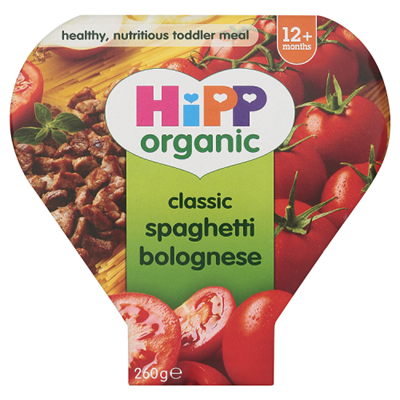 Remove the bones, rub through a sieve, separating the skin. Before serving, you can add a few grams of sugar.
Remove the bones, rub through a sieve, separating the skin. Before serving, you can add a few grams of sugar.
Bon appetit!
Read more recipes in the Baby food section
About when to introduce new foods into the baby's diet, about the beneficial properties of these products and how to diversify the crumbs menu with new dishes, read in the Baby Food Encyclopedia
Plum puree for babies
What are the benefits of baby plums? Cooking mashed potatoes and compote for baby
Plum purée is a delicious and healthy baby food that can be easily and quickly prepared at home and is usually enjoyed by children. What are the benefits of plums? When and at what age can they be given to a baby?
Benefits of plums
Plums are useful for their rich vitamin content. These fruits contain a large amount of:
- ascorbic acid (responsible for the immunity of the child)
- B vitamins (naturally contribute to the normalization of metabolism)
- K (affects the quality of blood clotting)
- nicotinic acid or vitamin PP (lowers cholesterol, protects the circulatory system from blood clots, has a positive effect on the heart muscle)
- tocopherol or vitamin E (recommended for congenital pathologies of the respiratory system, eye diseases and dermatological problems in infants)
The benefits of plums are also based on their mineral complex. Moreover, there are more substances useful for the child's body than in pears or apples. Plums are rich in potassium and phosphorus, and these components play a primary role in the development of the baby's nervous system. nine0003
Moreover, there are more substances useful for the child's body than in pears or apples. Plums are rich in potassium and phosphorus, and these components play a primary role in the development of the baby's nervous system. nine0003
Plums also contain pectin, nitrogenous compounds, organic essential acids, and tannins. All these components have a positive effect on the development of the child's body and help strengthen its immunity.
When can it be given to a child?
Fresh plums can be given to an infant when he has already become familiar with most vegetables and fruits and has adapted to their intake. They should be introduced into the baby's diet no earlier than at 8-9 months. nine0003
The pulp of fresh plums is less accepted by the baby's stomach than the same apples or potatoes, so it is not recommended to start complementary foods with them. Early consumption of these sweet fruits can cause indigestion in a small child, worsen his well-being, and exacerbate existing problems with the gastrointestinal tract.
Plum compote or puree can also cause a serious allergic reaction in an infant. A food allergy to plums in a baby can be manifested by redness on the skin, peeling on the hands, and fever. In difficult cases, there may be swelling in the lips and tongue. At the first symptoms of a similar etymology, it is urgent to stop giving dishes from plums to the child and seek help from a pediatrician. nine0003
Which plums should I start complementary foods with?
Plums are highly acidic, so it is better to introduce them into baby foods in the form of puree or compotes. To make tasty and healthy meals for your child, you need to choose ripe and juicy plum fruits. It is worth refusing at the initial stage from bright red varieties, replacing them with yellow or white ones (allergy most often manifests itself precisely on red-colored fruits).
Plum Puree Recipe
Ogrudnichke.ru readers recommend: - A review of the most popular vitamin supplements for children from Garden of Life Read the article >>> - How can Earth Mama products help young parents with baby care? Read article - Dong Quai - an amazing plant that helps keep the female body young Read more. .. - Vitamin complexes, probiotics, omega-3 from Garden of Life, designed specifically for pregnant women Learn more >
.. - Vitamin complexes, probiotics, omega-3 from Garden of Life, designed specifically for pregnant women Learn more >
>>
- Rinse the fruits in hot water without letting them cool, remove the skin with a sharp knife, remove the stones.
- Place a few pieces in a blender bowl (it is more convenient to use immersion models) and grind until smooth.
- The result is a concentrated puree, which can be diluted with a small amount of juice or purified water for babies. If the mother is allergic to this product, it is not worth giving it to the baby for at least three years. nine0124
For older children (after one year), you can prepare a multi-component puree. To do this, add a pear, apple or, for example, prunes to the recipe. The first complementary food should not contain such a large number of ingredients, because. in this case, it will be quite difficult to identify the cause of allergic manifestations.
A little fructose can also be added to the plum puree recipe (sugar on the menu of children under three years of age may be present in a very limited form). This dish can help with constipation in infants. It is not worth offering it to a child in large quantities, because. there is a risk of getting diarrhea, and it threatens to wash out nutrients and dehydrate the body. nine0003
This dish can help with constipation in infants. It is not worth offering it to a child in large quantities, because. there is a risk of getting diarrhea, and it threatens to wash out nutrients and dehydrate the body. nine0003
Babies from 8-9 months can be given no more than 3-4 teaspoons of plum puree. When the child is one year old, the dose can be increased to 100 grams and given to a healthy child such a treat no more than two to three times a week.
Puree with a milk component can be introduced into complementary foods. For these purposes, both skim milk and breast milk are suitable. Fruits are first crushed in a blender, then milk is added to the mass and thoroughly beaten again. Such a recipe may be useful for children suffering from systematic constipation. With a predisposition to stool disorder, it is not recommended to use the recipe. nine0003
Plum compotes
Compote is useful because it has a milder effect on the baby's body than fresh plum dishes. In complementary foods, as well as with mashed potatoes, only one-component compote should get into it and it is better that it does not contain sugar.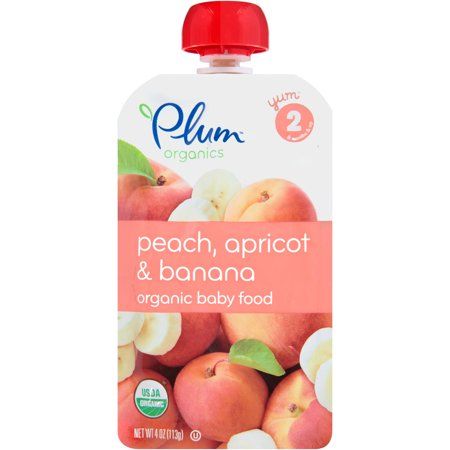
The recipe is simple: carefully wash the fruits, dip them in purified boiling water, simmer on low heat for no longer than five minutes under a tightly closed lid, turn off and leave to infuse at room temperature for 3-4 hours. nine0003
Compote will be more fragrant if prepared from fresh fruits, but frozen plums can also be used for this purpose. Canned compote should not be included in complementary foods due to the fact that it contains an increased dose of sugar, which is not particularly useful for the child.
Plum compote can be prepared for two days at once. The drink keeps well in the refrigerator. Give compote to a baby of any age in a warm form.
Apples, pears, dried fruits can be added to the drink recipe for children over one year old. The ratio of fruits can be very different. Usually an equal portion of plums and other fruits is taken. For sweetness, honey or weak sugar syrup can be added to the drink recipe. nine0003
Important about plums
Feeding with plums should be started only after a full introduction of vegetables (in this case, the child's body will be ready to digest them).
These fruits contain a lot of sugar, so they contribute to weight gain and improve appetite. They are not recommended for children with a predisposition to diabetes.
Plums have a diuretic and choleretic effect.
Allergy to this product may be cumulative (allergy does not appear immediately, but as the body is saturated with fruits). nine0003
Plums reduce weather dependence, which often occurs in infants.
Unwashed plums are dangerous for dysentery, treated with glycerol (for long-term storage) - poisoning, frozen - with phosphates (wash out calcium).
Allergy to plums is less common. For people who have a predisposition to it, it is worth choosing fruits of white or blue color. Allergy can be a serious test for a child, so it is important to notice it in the early stages of development. nine0003
Preparing plum puree for babies for the winter
Every year a lot of berries and fruits ripen in summer cottages and village gardens. Housewives are actively beginning to save pieces of summer for the winter in the form of jams, compotes and jellies. Each woman has her own optimal recipe for preserving different berries, and, as a rule, an exorbitant amount of sugar is a preservative in it.
Housewives are actively beginning to save pieces of summer for the winter in the form of jams, compotes and jellies. Each woman has her own optimal recipe for preserving different berries, and, as a rule, an exorbitant amount of sugar is a preservative in it.
But for the youngest members of the family, such an amount of sweets can harm. How compactly can plums be stored so that they can delight the baby with their taste even in winter and how to save healthy plum puree for babies for the winter? nine0003
Benefits for the body
Plum has a laxative effect on the intestines, so plum puree can correct its work. In addition, these fruits help reduce acidity, dilate blood vessels and have a slight decongestant and diuretic effect.
Plum contains many vitamins A, C, PP and group B in its composition. It is also rich in minerals such as potassium, copper, calcium and sodium and magnesium.
It is important to know that blue plum skins are not recommended for children under 5 years of age, so use yellow varieties for preparations or choose a recipe where you need to remove the shell.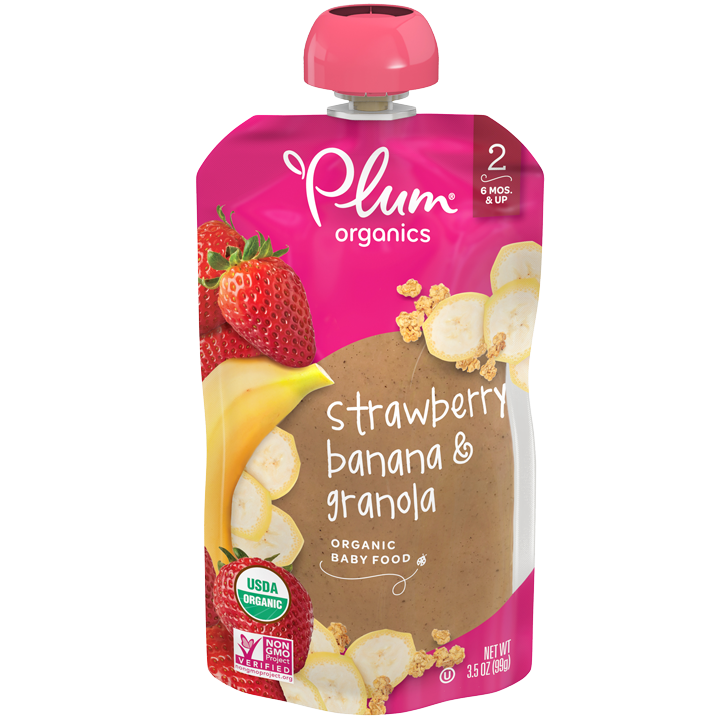 nine0003
nine0003
Winterizing
If you have enough space in the freezer to store plums as well, you can freeze plum puree for the winter. It will lie there quite compactly compared to whole fruits, and subsequently it will be convenient for you to use portioned briquettes in order to please your baby with a natural product.
The recipe for plum puree for baby is very simple. You will need to wash fresh plums well to remove natural wild yeast from the surface of their skins. Then the fruits need to be cut and the bones removed from them. It is believed that all fruits accumulate harmful substances in the skin and therefore it is recommended to cut it off. But at the same time, almost all useful substances are concentrated in it. Therefore, if you are sure that your fruits are harmless, twist the plums in a blender along with the peel. nine0003
Prepare clean containers in which you will freeze the puree. In order not to suffer later, immediately think about how large a portion should be.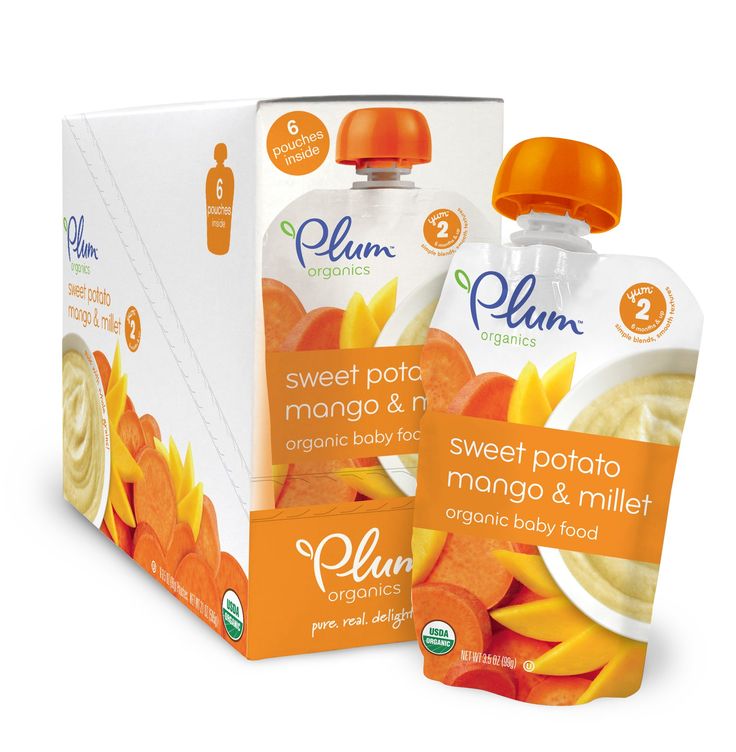 You can freeze the puree in plastic disposable glasses, and then transfer the resulting briquettes into one bag.
You can freeze the puree in plastic disposable glasses, and then transfer the resulting briquettes into one bag.
Puree must be defrosted gradually and at room temperature.
Since plums are slightly acidic, you can mix different types of fruit puree in different proportions when feeding. By the appetite of the baby, you will understand which recipe he likes more than others. nine0003
How to preserve mashed potatoes
Not everyone has freezers, and there is hardly enough space in the refrigerator for such preparations for the future. Therefore, many mothers, trying to preserve for their children all the benefits of fruits growing in summer cottages, canned them. Even if the cooking recipe is without adding water, the plum puree will turn out to be quite watery and sour. Therefore, parents often dilute it and give it to the baby in the form of natural juice or combine it with other sweet fruits. nine0003
nine0003
Glass jars from store-bought baby food are suitable for storage, the main thing is that the metal lids have a thread - then they will store your work reliably and for a long time.
The process of preserving mashed potatoes for the winter is no different from the standard "spins". First you need to sterilize the washed jars - pour water into the pan, place the lids in it, fasten a colander on the walls of the container, and put the jars on it upside down. The liquid will boil, the steam will fill the glass vessels, and when the moisture drips down the walls, we can assume that the jars are sterile. As a rule, this takes about 5 minutes.
Soak the plums for a couple of hours in saline solution (2 teaspoons per liter of water) so that the worms come out of them. The plum puree recipe is easy. Wash the fruits, cut and remove the seeds. Put the plums in a saucepan, add a glass of water and cook for 8 minutes after boiling. The fruits from cooking will become softer, and after cooling them, you can rub the pulp through a sieve or with a blender. The resulting plum emulsion must be boiled and placed in sterile jars.
The fruits from cooking will become softer, and after cooling them, you can rub the pulp through a sieve or with a blender. The resulting plum emulsion must be boiled and placed in sterile jars.
Jars with mashed potatoes should be placed in a saucepan so that hot water reaches their “shoulders”, and covered with lids, sterilized for another 10 minutes. After the jars are twisted and cooled upside down. With 1 kg of ripe plums, you get about 800 grams of natural puree. nine0003
Making prunes puree
For making puree, you can take not only fresh fruits, but also dried ones. You can easily make prune puree for babies with your own hands. In dried plums, all useful of these fruits are preserved.
Dried fruit puree recipe is almost the same as fresh fruit puree. Rinse prunes with water, pour boiling water over them and leave to collect moisture for at least 3 hours. Then the liquid must be drained and the soaked fruits boiled, after which the skin will be removed from them quite easily. The remaining pulp must be carefully ground to a state of homogeneous mass. If the emulsion turned out to be too thick, you can dilute it a little with water, and then be sure to boil it. Healthy prune puree for babies is ready, it remains only to cool it. nine0003
The remaining pulp must be carefully ground to a state of homogeneous mass. If the emulsion turned out to be too thick, you can dilute it a little with water, and then be sure to boil it. Healthy prune puree for babies is ready, it remains only to cool it. nine0003
Trying each recipe, you will understand which one is easier and more optimal for you, and you will be able to save all the useful properties of plums for your baby for the winter.
Plum puree for baby food
Making fruit puree for baby food at home is quite simple. Especially if you have an extra minute and you are going to make apple puree. These fruits only need to be cut into pieces, freed from the skin, boiled and chopped. But if you are planning to feed your baby with more unusual "jars", you will have to use some tricks! Plum puree for feeding is one of such “tricky” dishes: the fruits themselves seem to be simple, but to prepare a homogeneous mass of them, some skill is needed. nine0003
- Ingredients:
- Hungarian plums - 2 kg,
- Sugar - 80 g,
- Water - 150 ml.

In addition to the ingredients for making baby puree, you will need a large pot for boiling fruit, as well as jars with a capacity of about 200 with their "native" screw caps. The container will need to be sterilized, so also prepare a large pot or bowl with a wide bottom for this.
Because plums contain hard skins, the fruit must be freed from them, otherwise a homogeneous mass will not be obtained. There are two ways to remove the skin from plums:
- The first one is needed if you are preparing plum puree for a baby that has not yet erupted teeth: boil the fruits, and then, after slightly cooling them, grind through a sieve. Then add the resulting plum mass without pits and skins with sugar, boil and cork in jars.
- Well, for a baby who already has several teeth, the second cooking method is suitable, which will be discussed in our master class. Puree prepared in this way will also be homogeneous, but may contain small streaks of plums. nine0003
How to Make Plum Puree for Children for the Winter - Step by Step Recipe
1 Wash the plums and separate each fruit into two halves, removing the pits. Then, prying off the skin with your fingernail, remove it from each half of the plum. If your plums are ripe (and specifically the Hungarian varieties), it should not be difficult to remove the skin. Next, put the “bare” halves of the plums into a saucepan and put on a small fire.
Then, prying off the skin with your fingernail, remove it from each half of the plum. If your plums are ripe (and specifically the Hungarian varieties), it should not be difficult to remove the skin. Next, put the “bare” halves of the plums into a saucepan and put on a small fire.
2 Add water to the plums, stir and cook after the water boils for 10 minutes. At this stage, you will get boiled plums. Remove the saucepan from the heat, let the plums cool slightly, and transfer them to the bowl of a food processor. Grind the boiled plums until smooth at the highest speed of the processor. nine0003
3 Pour the smooth plum mixture back into the saucepan, add the sugar, stir and place over low heat. When boiling, mashed potatoes can ooze in different directions, so cover the pan with a lid.
4 Boil the puree for 5 minutes, after which it can be considered ready. In the meantime, sterilize the canning container. Place the jars upside down in a saucepan or bowl with lids next to them. Pour some water into the pan (no more than a liter), bring to a boil and boil the container for 10 minutes. nine0003
Pour some water into the pan (no more than a liter), bring to a boil and boil the container for 10 minutes. nine0003
5 Divide the finished hot puree into jars, screw on the sterilized hot lids and place upside down on the table. Let the jars in this position cool completely: if during this time not a single jar “flows”, then everything went fine, and the puree can be rearranged to the storage place.
Weaning baby food is ready! Plum puree has a pleasant sweetish taste, so the baby will definitely like it! And yet, this puree can be added to other dishes: unsweetened cereals, chopped cottage cheese ...
Bon appetit to your little one!
Plum puree for babies
The baby is growing up, and the mother has new worries: it's time to gradually switch to solid food. Such an event is both a celebration and a test for both. Usually, the first complementary foods begin at 4-6 months with liquid cereals. Start with half a teaspoon, gradually moving to one full feeding.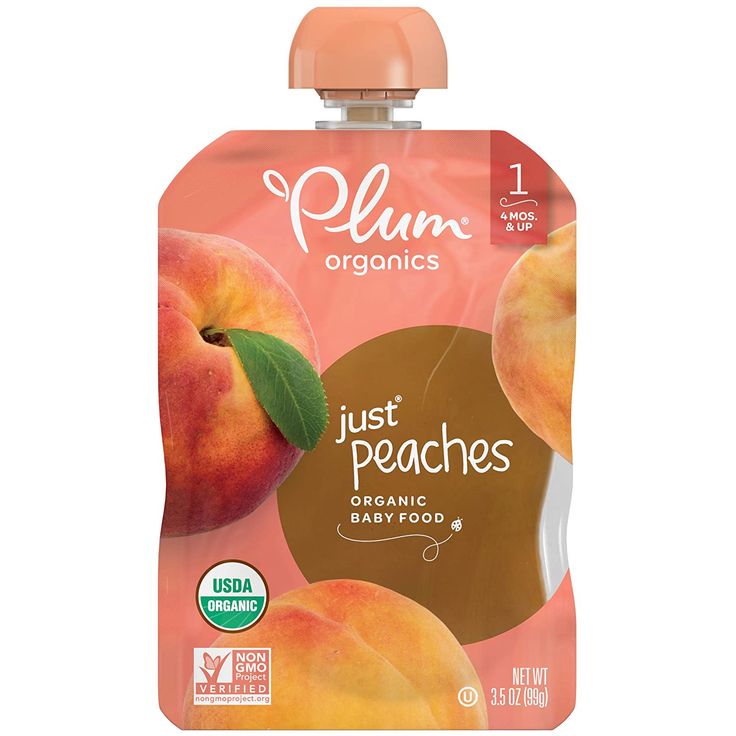
Fruits are added to the baby's food from about 5-6 months. At the first feeding, he grimaces, spits out new food, smears it on his face. But this is not for long. Usually children quickly begin to understand: fruits are very tasty. And now, after a few days, when he sees his mother, with a plate of fruit puree, the baby begins to make joyful sounds, as if saying, “Come on, feed me soon.” nine0003
At first, mashed fruits should not be given. It is better to start with one kind. To avoid an allergic reaction, do not give your child exotic or red-colored fruits and berries. The best option for the first fruit food may be apples, plums, pears.
Plum puree for babies is easy to prepare. You need to select only ripe soft fruits of non-acidic varieties. Plums are rich in many useful substances: fructose, glucose and sucrose; vitamins A, C, B1, B2, P, organic acids, tannic, nitrogenous, pectin substances. Minerals in plums are present in a larger volume than in apples and pears.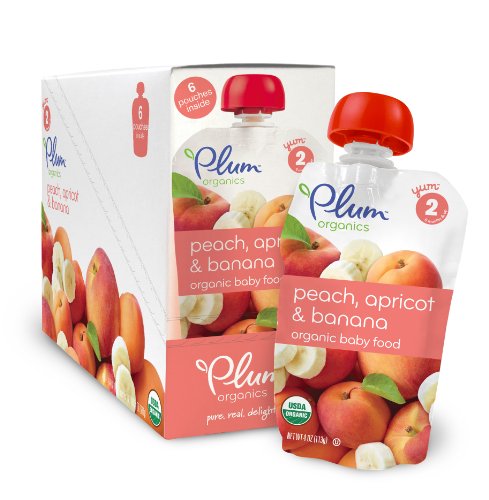 Plum puree contains a sufficiently large amount of potassium and phosphorus, which is especially beneficial for the nervous system of a little man. Now we will tell you how to make plum puree for babies. nine0003
Plum puree contains a sufficiently large amount of potassium and phosphorus, which is especially beneficial for the nervous system of a little man. Now we will tell you how to make plum puree for babies. nine0003
Plum puree for babies
Ingredients:
Preparation
Thoroughly wash the plums under running water and boil for 10 minutes. When the fruits have cooled, remove the skin, remove the seeds. Grind the pulp in a blender.
At the age of 7-8 months you can start giving your baby combination meals. Plum puree for a child can be supplemented with an apple, pear or banana. Mixed puree is prepared according to a similar recipe. First, the fruits are boiled, and then ground with a blender to a mushy state. nine0003
Puree of pears, plums and other fruits without heat treatment is recommended to be given to children not earlier than 8-9 months. Fresh fruits are peeled and carefully ground. All fruit purees need to be prepared for only one feeding, it is better not to leave a reserve.
In addition to fruit purees, you can prepare baby vegetable purees according to our simple tips.
Articles on the topic:
| Banana puree for babies Introducing fruits to your baby, of course, begins with puree. And it's best to start with a banana. It does not cause allergies, and at the same time is high-calorie and nutritious. So let's figure out how to make healthy banana puree for babies. nine0003 | Prune puree for babies The first food for babies is very important. And mothers need to approach the choice of products for such a diet responsibly. Today we want to offer you several recipes for prune puree for babies. But we must remember that this fruit has laxative properties. |
| Baby Applesauce An apple is one of the first fruits that a baby is introduced to. Acquaintance begins at 2 months with apple juice. And already at 4-5 months, the baby can cook applesauce. That's what we'll talk about today in our article. | Carrot puree for babies Many parents choose vegetable puree for the first feeding of babies, and children are happy to get acquainted with new tastes. The first purees are usually one-component. We suggest you cook carrot puree for your baby. |
Plum puree for baby recipe
Plum puree for baby easy recipe even for those who don't know how or don't like to cook.
If the berries are not too acidic, it is better not to add sugar syrup to the puree. It should be remembered that sugar, like salt, is used in minimal quantities in the child's diet. nine0003
Sugar syrup
Mix 10 g of sugar with 50 ml of water.
The solution is boiled, stirring, over low heat for 10 minutes, filtered through several layers of sterile or boiled gauze, topped up with boiling water through the same filter to a volume of 100 ml and boiled again.
More delicious and healthy for babies and nursing mothers: RECIPES
Pour the hot syrup into a pre-boiled glass bottle and close tightly.
But remember that excessive consumption of sugar can lead to obesity and tooth decay in a child at an older age. nine0003
Plum puree for babies In our recipes, you can change the number of servings and the required amount of ingredients will automatically change on the website. By clicking on the links in the recipe, you can easily select the baby's menu according to the desired criteria.
- Select undamaged berries without dark spots, rinse in running water, pour over with boiling water and remove the seeds.
- Rub the berries thoroughly through a sieve, separating the skin.
- Add sugar syrup to puree.
You can prepare larger quantities of mashed potatoes and freeze the prepared mashed potatoes in portions in special forms. It is easy to warm up and feed the baby.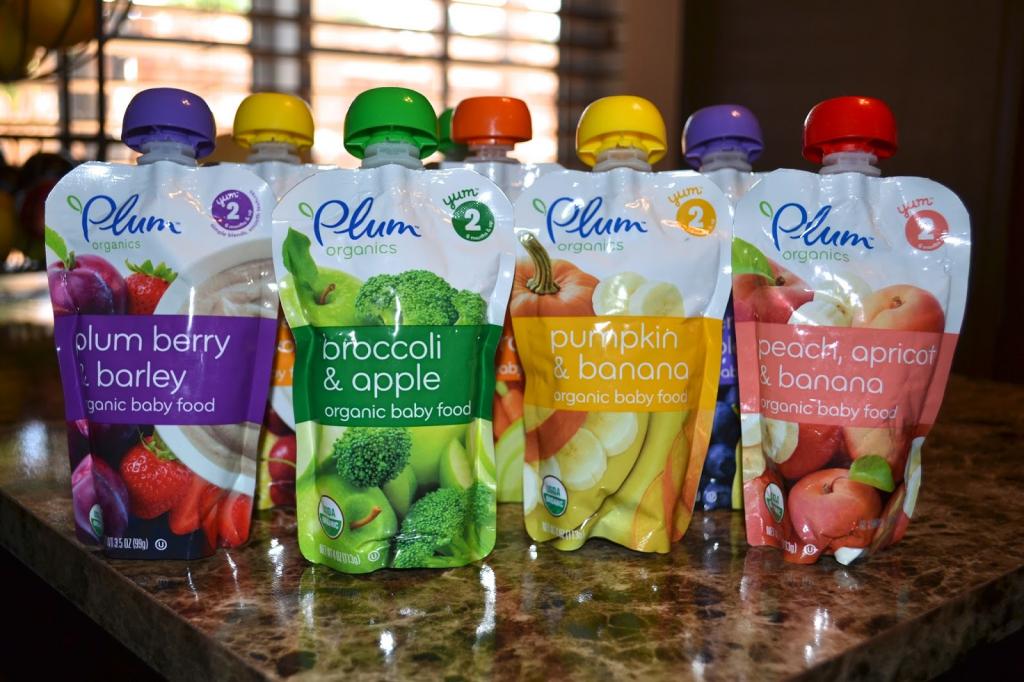
! Recommendation: Do not use sugar, salt and spices in children's meals.
This recipe is perfect for baby food but will be great for babies of all ages.
| All information posted on the site is for informational purposes only and cannot be used for self-treatment. Having acquired specific applied knowledge, do not experiment with the health of the child. When symptoms of the disease appear, the immediate help of a specialist is necessary. nine0003 Never make a decision without discussing the issue with a doctor - consultation with a pediatrician is required! |
When can I give my baby plums and plum puree as complementary foods?
Fresh stone fruit should be included in the child's diet. The nutrients they contain are necessary for proper growth and development. Take at least plums. They are nutritious, high in fiber and sugars, and help young children relieve constipation. Let's figure out at what age they can be given, in what form and quantity. nine0003
nine0003
Photo: Depositphotos.com. Author: filipw.
Benefits for the child
Plum contains the following useful substances:
- Vitamins of group B contribute to the full development of the baby's nervous system, prevent excessive anxiety.
- Vitamin C has an anti-inflammatory effect, helps the child's body fight viruses and significantly strengthens the immune system.
- Provitamin A has a beneficial effect on children's vision, stops its deterioration. nine0124
- P vitamins (or bioflavonoids) strengthen the baby's blood vessels, prevent fluctuations in blood pressure when the weather changes (that is, help fight weather dependence).
- Sodium prevents swelling, which is fortunately rare in children.
- Calcium is an essential element for a growing organism. Its sufficient content in plum fruits improves the condition of the bones of the child and the health of the teeth.
- Potassium has a positive effect on the functioning of the cardiovascular system; nine0124
- Copper is required for the growth and proper development of the baby.

Plum contains a large number of other minerals: nickel, silicon, fluorine, manganese, zinc, iodine, phosphorus and others.
This stone fruit culture will be useful for babies with intestinal disorders. The fruits have a mild laxative effect, helping the child cope with constipation. The laxative effect of plum stems from the content in its composition of a special substance - isatin and a high level of fiber. nine0019 b2 (riboflavin)
When and how much to give?
Photo: Depositphotos.com Copyright: Lovelymama
Plums are introduced into complementary foods not earlier than 8-9months. But American pediatricians are allowed to give plum puree to a child as early as 6 months.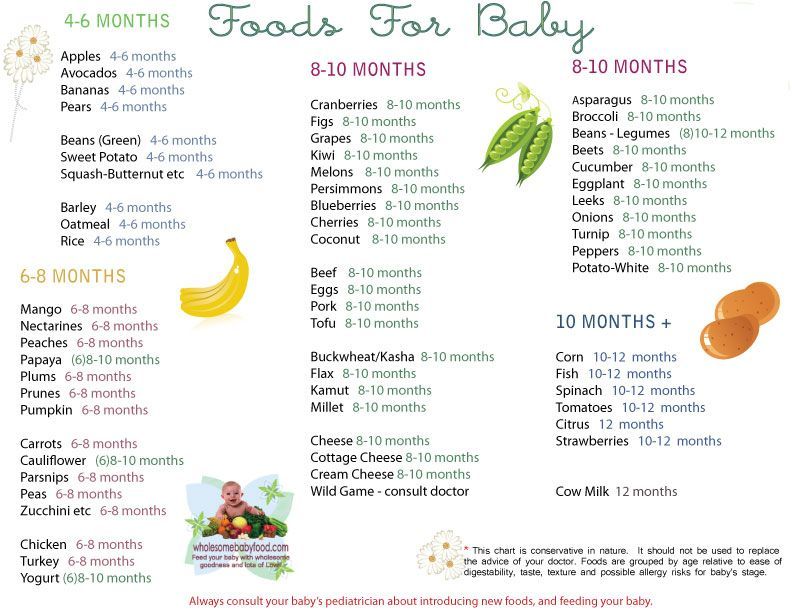 It is important that by the time you get to know this product, the baby has already tried most other fruits, including stone fruits, and they have not caused allergies.
It is important that by the time you get to know this product, the baby has already tried most other fruits, including stone fruits, and they have not caused allergies.
It is advisable to choose yellow for the first feeding plums - they are less likely to cause allergies. The most suitable dishes for the baby are mashed potatoes and compote.
At first, plum puree should be added to fruits that are already familiar to the baby, such as an apple. No more spoons needed. Gradually, in the absence of allergies, the volume of plums in fruit puree is increased, and then they switch to monocomponent plum puree. nine0003
Compote from dried plums (prunes) is better absorbed by the baby's body. For the first time, it is advisable to give the child no more than 20 ml of the drink. If within three days there are no signs of allergy, the portion can be gradually increased.
When a child has severe bowel problems that cause frequent constipation, the pediatrician may recommend a prune decoction from as early as 4 months of age. But such early complementary foods should be carried out exclusively under the supervision of a doctor and with great care. nine0003
But such early complementary foods should be carried out exclusively under the supervision of a doctor and with great care. nine0003
Why not suitable for first complementary foods?
- Plum is a product that often causes allergies in babies. Therefore, its introduction into complementary foods is permissible only after other fruits, which are less likely to cause an undesirable reaction of the body.
- In addition, plum fruits have a laxative effect. It is difficult to predict to what extent the child's body will react to this product, if nothing but breast milk or formula has not yet been tested.
- The fruit has a serious effect on the acidic environment of the stomach. Therefore, you should first prepare the baby's body for a new product with another, more gentle food for the gastric mucosa. nine0124
- And last but not least, weaning food should start with vegetables. And after sweet and tasty fruits, the child often refuses them.
Selection Tips
In order for plums to benefit a child's body, the fruits must be carefully selected.
- Only ripe specimens without dents should be taken. Be sure to check the fruit for rotten areas. Even with minimal damage, it is strictly forbidden to give fruits to the baby. nine0124
- There are more than 2,000 varieties of plums in the world, so it is simply impossible to list all suitable for a child. But sweet varieties (fast-growing, blue gift, etc.) will please the baby more, while their acidity is relatively low.
- Due to the high allergenicity of plums, it is advisable to choose yellow or white fruits. When using red and purple specimens, allergic risks increase.
- Buy your child fruit that has been grown and harvested near where you live. "Native" fruits will bring much more benefits than "overseas". nine0124
A selection of children's recipes
To preserve the maximum of vitamins and minerals in plum food, it is necessary to prepare it correctly. Usually, two dishes are perfect for children under one year old: mashed potatoes and compote.
Plum puree
- Be sure to thoroughly wash the fruits, pour boiling water over them and immediately remove the scalded skin with a thin knife.
- Then cut the plum into 2 halves and remove the pit.
- Place in a blender and blend until smooth. nine0124
- If the baby puree is too thick, you can dilute it with a little water.
Chicken purée
If your baby has already switched to meat and has become familiar with chicken meat, you can prepare plum purée with chicken for him.
Recipe recommended for children over 8 months old.
- Take 3 plums, peeled, pitted and cut into cubes.
- Cut one chicken fillet in the same way. nine0124
- Put everything together in a saucepan, add a glass of water and simmer until the meat is tender.
- Cool slightly and then puree the contents of the saucepan with a blender.
Compote
Plum compote requires 250 g of fruit and 750 g of water.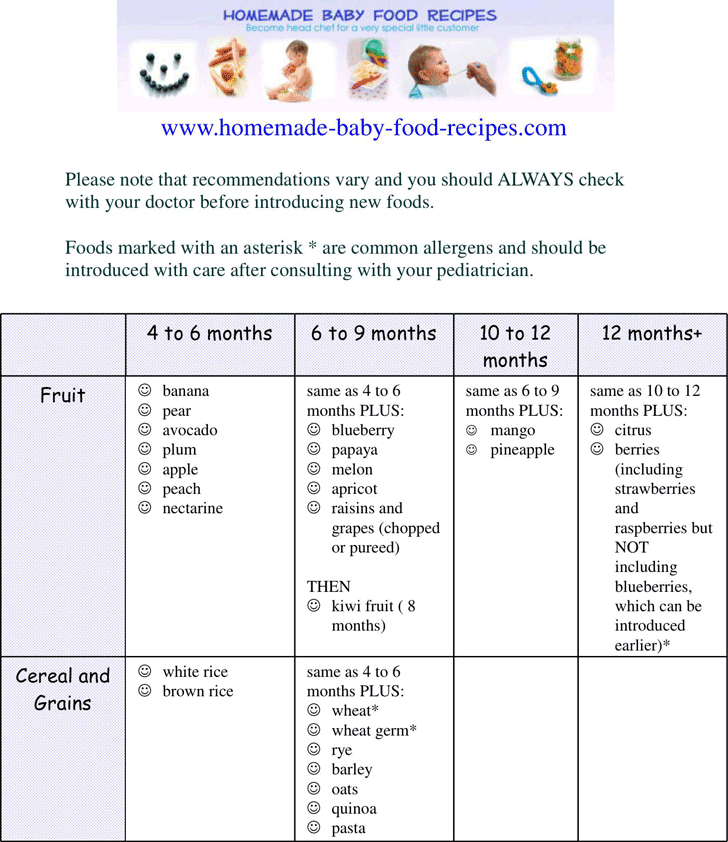 If the compote is intended for a child older than a year, you can add a couple of tablespoons of sugar.
If the compote is intended for a child older than a year, you can add a couple of tablespoons of sugar.
- Wash and pit the plums.
- Place in cold water, add sugar if necessary. nine0124
- Put on fire. After boiling, cook the compote for 2 minutes.
- Cover the saucepan with a lid and leave to infuse.
After 2-3 hours, you can already give compote to your baby. If your child is just getting to know a new fruit, be sure to strain the drink before serving.
Preparing for the winter
If the age at which plum can be introduced into complementary foods falls in winter, it is better to take care of preparing mashed potatoes for the winter in advance.
- Rinse the fruits, peel and remove the stones.
- Steam for 2-3 minutes to soften.
- Grind with a blender and heat without boiling.
- Pour the finished puree into sterilized jars to the brim, close with lids.
- Cool at room temperature by turning jars upside down.

The ripest and sweetest fruits are chosen for winter preparations.
Caution does not hurt
Despite the benefits of plum for the baby, before introducing it into complementary foods, contraindications must be considered:
- If your child has gastrointestinal problems or does not respond well to new foods, eating plums will make things worse.
- It is undesirable for children under three years of age to give such fruits in their usual form - whole or in halves. This can injure the delicate lining of the stomach. In addition, the baby can swallow the bone or even choke on it.
- When a child has diarrhea, plums should be completely excluded from the diet, including in the form of compote from these fruits.
It is necessary to prepare puree and compotes from plums in August-September. During this period, fruits ripen naturally, without the participation of harmful fertilizers, and contain all the necessary vitamins.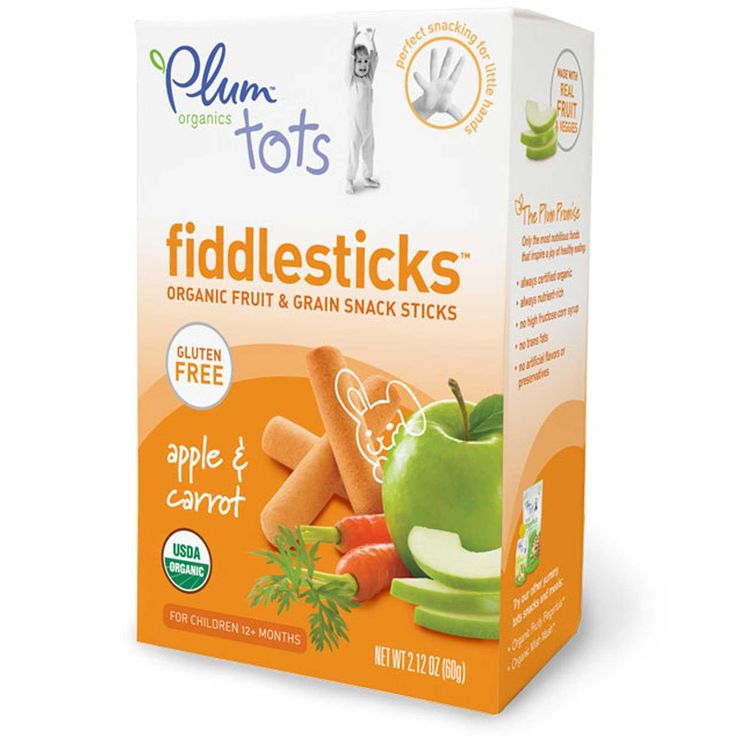 Fruits bought at other times of the year, no matter how attractive at first glance they may be, are not recommended for children. nine0003
Fruits bought at other times of the year, no matter how attractive at first glance they may be, are not recommended for children. nine0003
Do not be surprised if your child develops diarrhea after eating plum puree, as the product contains laxatives. Most of them are concentrated in the fruit peel, which is why its removal significantly reduces the likelihood of diarrhea in the baby. If this still happened, you need to postpone plum complementary foods for at least half a month and next time start complementary foods with a smaller portion.
Allergy to plums
Plums are contraindicated in children prone to allergic reactions. This fruit often causes allergies, so you should postpone its introduction into complementary foods until three years old, when the baby's gastrointestinal tract is fully formed. nine0003
Experts associate the body's negative response to plum with sensitivity to birch pollen. Therefore, if one of the parents suffers from seasonal reactions, the likelihood of an allergy in the baby is high.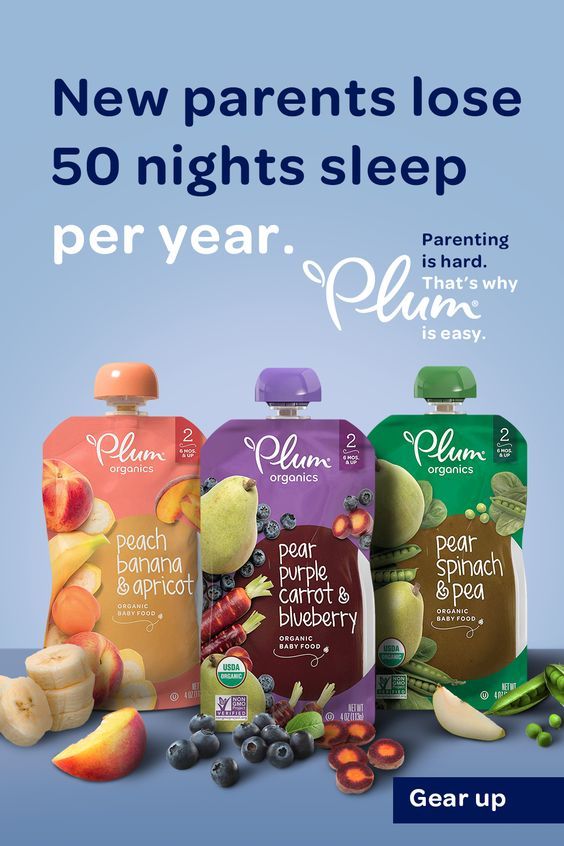
In addition to plums, the following foodstuffs correlate with intolerance to birch pollen:
- fruits: apples, pears, peaches, cherries, kiwi;
- vegetables and herbs: carrots, fennel, potatoes, spinach and celery;
- nuts: peanuts and hazelnuts; nine0124
- buckwheat;
- flower honey.
The allergens in plums are not destroyed by heat treatment, as some mistakenly believe. Therefore, fruits boiled or scalded with boiling water do not become safer for particularly sensitive babies.
Companion products
Plums are introduced into the baby's complementary foods at the same time as fruits such as light cherries, peaches, nectarines and apricots. Apricots contain a large amount of folic acid, which improves the appetite of little ones. And the beneficial substances in the composition of nectarines and peaches normalize digestion and strengthen the baby's immunity. nine0003
Here we should not forget that after getting acquainted with a new fruit, at least a week should pass.

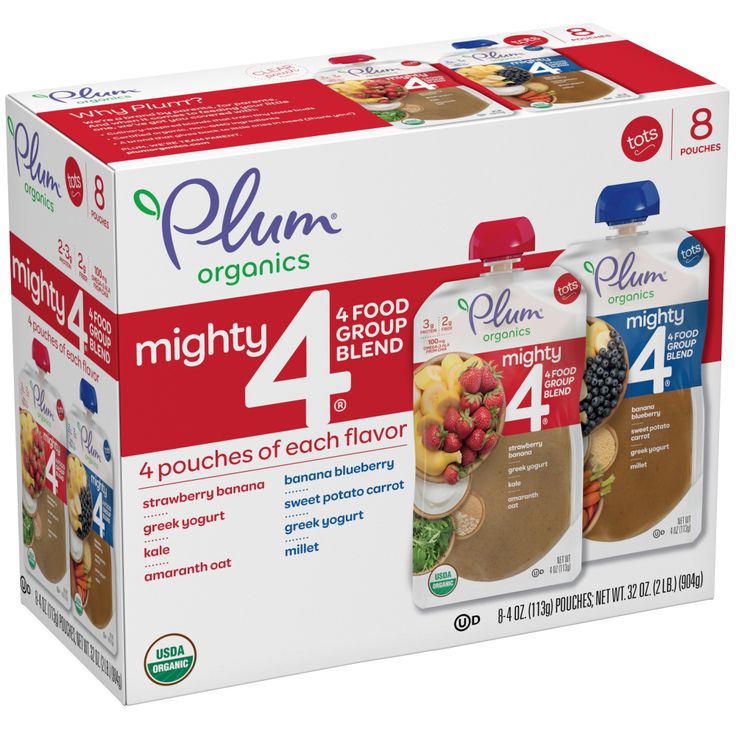 6 mg
6 mg 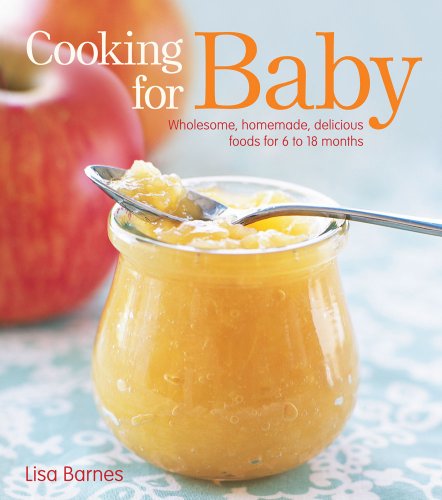 Read our helpful tips and make the first complementary foods for your baby. nine0003
Read our helpful tips and make the first complementary foods for your baby. nine0003 
